ISSUE 24 | SPRING ‘23
University of Central Florida

UNIVERSITY OF FLORIDA
EDITOR-IN-CHIEF Mercy Tsay
MANAGING EDITOR Loryn Smith
FINANCIAL EDITOR Marium Abdulhussein
CONTENT EDITORS Hanna De La Garza • Karen Zhang • Aliza Ahmed
DESIGN EDITORS Aryam Amar • Mercy Tsay • Elyza
Navarro
PHOTO EDITOR Refat Roja
PR DIRECTORS Jackie Truong • Destiny Tran
WRITERS Morgan Hurd
Yeleeya Li
• Aize Hassan
Fernandez
• Dzung Nguyen
• Ian Kim
• Lex Mundy
DESIGNERS Lauren Shee
Pudpud
Edwards
• Tarryn Nichols
• Ally Maldonado
• Isabelle Coleman
• Mya McGrath
• Tiffany Vivi Nguyen
• Leyun Wang
• Justin
• Kate Lynne
• Srinithi Reddy
• Divya Somayaji
PHOTOGRAPHERS Carolina Tortorelli
Chan
• Leyun Wang
• Maria Vanderbilt
Macy Phan
PR STAFF Tammy Nguyen
Ashley Twilley
• Madison
• Shiyin Hong
• Eileen An
• Kat Tran
• Cami
• Hayli Balgobin
• Vy Nguyen
• Ellie Uchida-Prebor
• Angela Han
• Michelle Tang
•
•
•
UNIVERSITY OF SOUTH FLORIDA
EDITOR-IN-CHIEF Sanikaa Thakurdesai
MANAGING EDITOR Amy Pham
FINANCIAL DIRECTOR Anagha Hesaraghatta
CONTENT EDITOR Krisha Patel
DESIGN EDITOR Amreen Naveen
PHOTO EDITOR Mridula Singh
PR DIRECTOR Quyen Tran
PROGRAMMING EDITOR Ishita Sen
WRITERS Isha Harshe • Khoa Hoang • Nimrit Doad • Fariah
Ansari • Reagan Huynh • Anushri Gade • Serena Bhaskar
• Abdul Moeed Zahid • Sayona Jose • Vaishnavi Yelchur
• Vaidehi Persad • Riya Choksi • Aditi Dhruve • Yasaswi
Nimmagadda • Alphy Maria Antony • Merita Mary Thomas
DESIGNERS Isha Harshe • Khoa Hoang • Nimrit Doad •
Daniela Kate Abaquita • Sana Lulu • Abdul Moeed Zahid •
Vaidehi Persad • Dan Pham • Jessenia Abrigo • Riya Choksi
• Nistha Sevak • Yasaswi Nimmagadda • Merita Mary Thomas
PHOTOGRAPHERS Kaniz Angel • Khoa Hoang • Anna Jade
PR STAFF Andrea Zdunkevich • Quynh Phan
NATIONAL BOARD
EXECUTIVE DIRECTOR Jason Liu
CHAPTER DEVELOPMENT DIRECTOR Aleem Waris
MARKETING DIRECTOR Ingrid Wu
DEVELOPMENT DIRECTOR Chelsey Gao
CHAPTER MEMBERSHIP DIRECTOR Catherine Le
FOLLOW US ON SOCIAL MEDIA
FACEBOOK Sparks at the University of Central Florida INSTAGRAM @ucf_sparks_mag
TWITTER @ucf_sparks_mag
sparks-mag.com
CHAPTER MANAGER Bryant Nguyen
SOCIAL MEDIA MANAGER Sally Zhu
LEAD GRAPHIC DESIGNER Esther Zhan
WEB DEVELOPER Chris Tam
FUNDRAISING MANAGER Kim Moya
MARKETING/SOCIAL MEDIA INTERN Jade Wu

UNIVERSITY OF CENTRAL FLORIDA
COVER
2 | SPRING 2023
PHOTO Nathan Swinburne DESIGN Denise Ferioli MODELS Jiya Sishodia, Khushi Sishodia
E-BOARD
EDITOR-IN-CHIEF Asma Ahmed • MANAGING EDITOR Zoey Young • FINANCIAL DIRECTOR AJ Johnson


G-BOARD
PR MANAGER Jenna Ho • LEAD PHOTOGRAPHER Nathan Swinburne • WEB DESIGNER Liana Progar • CONTENT EDITOR Norah Layne

STAFF

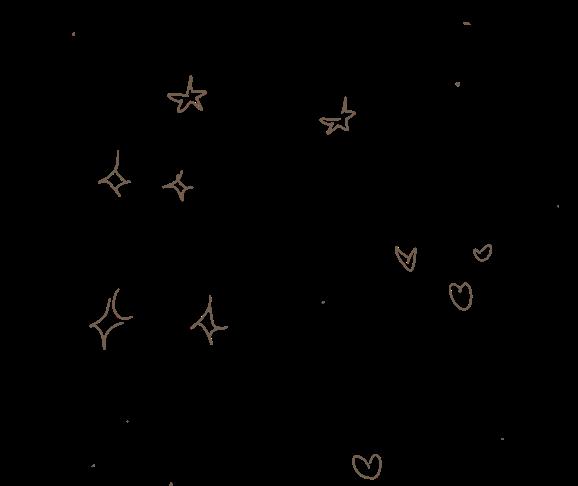
WRITERS AJ Johnson • Caitlyn Mari Koerner • Liana Progar • Norah Layne • Zoey Young • Khadija Nemazie • Monique
Toon • Sketch
DESIGNERS Asma Ahmed • Arianna Flores • Manaal Sheikh • Maliha Versi • Sunitha Kishore • Denise Ferioli
PHOTOGRAPHERS Abbie Huynh • Natalie Nguyenduc • Khadija Nemazie • AJ Johnson • Nathan Swinburne • Liana Progar

PR STAFF Grace Casanova • Jenna Ho •Breanna Pham



MODELS Jiya Sishodia • Khushi Sishodia • Elizabeth Ho • Alyssa Scripture • Gregory DeJesus • Mark Pido

SPRING 2023 | 3
A LETTER FROM THE EDITOR

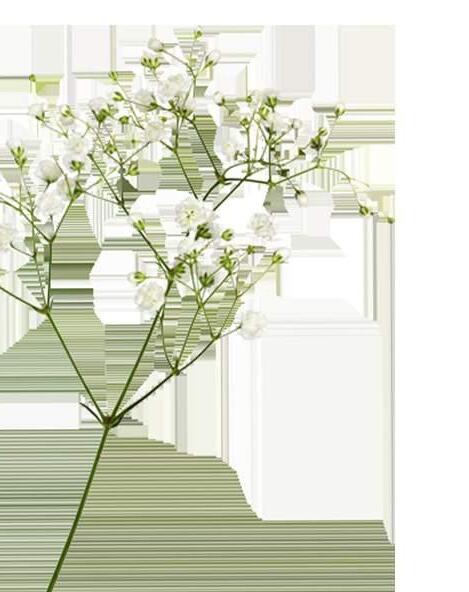

them steadfast, and bring color to a darkening world. In this issue, we hold onto what makes us individuals by highlighting what we love. Our cultures, our homes-from India to the Pacific Islands-- our art and the things that bring us joy, even if we have to carve out a space for ourselves. Art in all forms, design, photography, music, theater, literature, makes up who we are.
In past issues, I have talked about our resilience and adaptability and growth and optimism. This time around, I want to highlight our spirit. Despite the constant challenges we face, be it a difficult semester, our inner turmoil, or even opposition from our government, we fall back and we rise again. We will continue to tell our stories, to find things that we love and hold on to
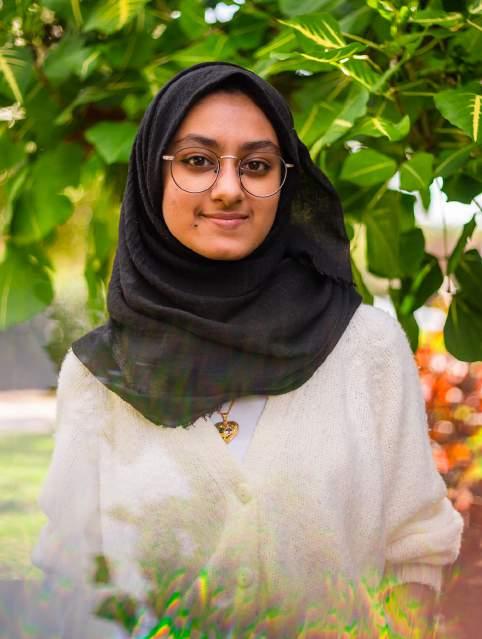
When we are barred from being ourselves, we must never lose sight of who we are. What we love, what we hold dear, we must never let go, for joy is an act of resistance.
I am always thankful for each and every iteration of Sparks members over these years. Their hard work and dedication to their craft is a reflection of Sparks’ mission to bring to light our community, and their own individual marks on the world.
Dear reader, I hope you are able to hold space for yourself and hold on to what you love. I hope when you parse through these pages, you see -us-, as creatives and as individuals, and maybe you might see yourself as well.
EDITOR-IN-CHIEF

DEAR READERS, 4 | SPRING 2023
What a journey it’s been. This semester, I turn the final page on my story with Sparks Magazine. The first issue I had ever worked on was Issue 18 as a designer, nearly three years ago. Now, I present to you our Issue 24, or more accurately, our combined Issue 23 and 24. You might notice that I’ve returned to my origins as a designer in this one.
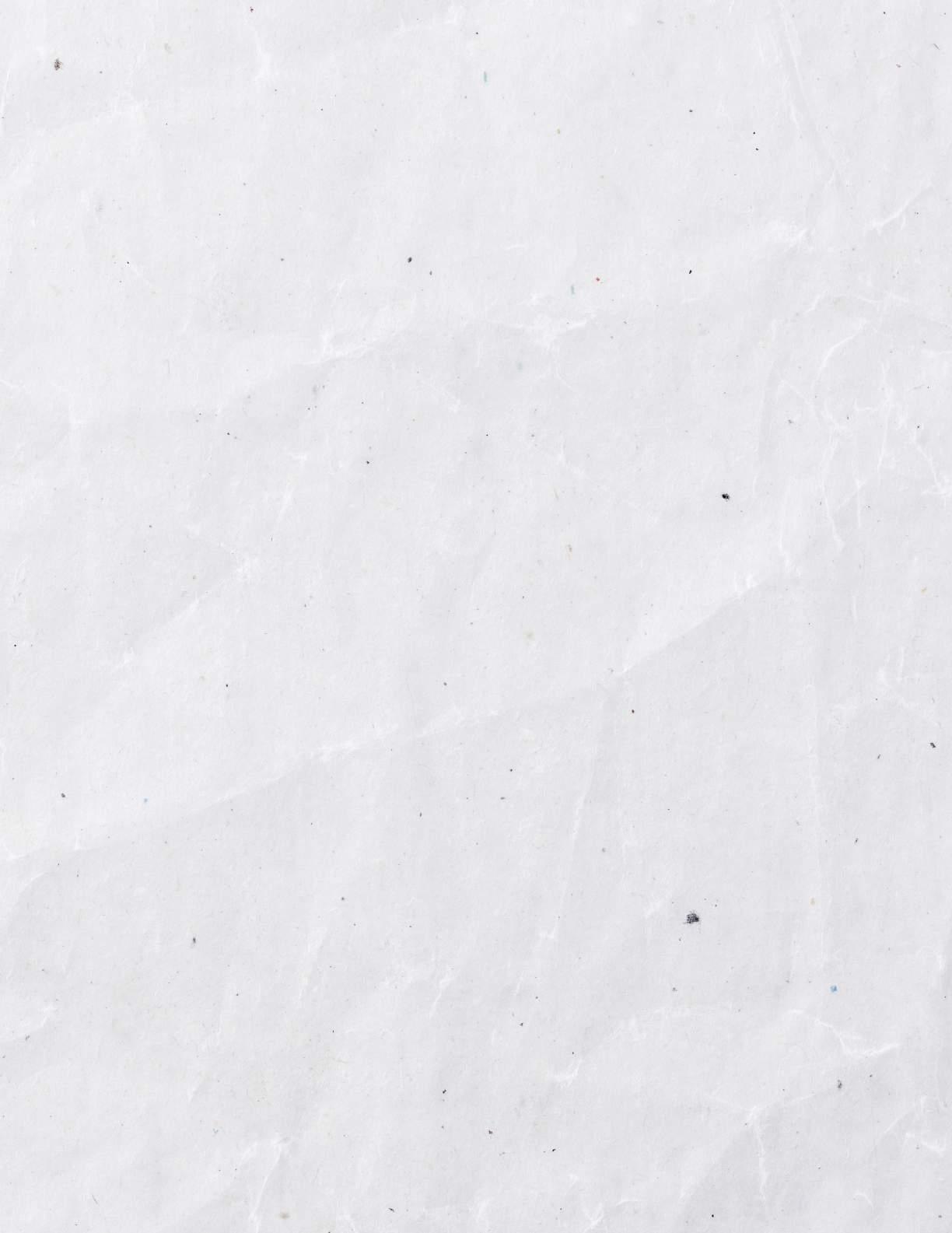
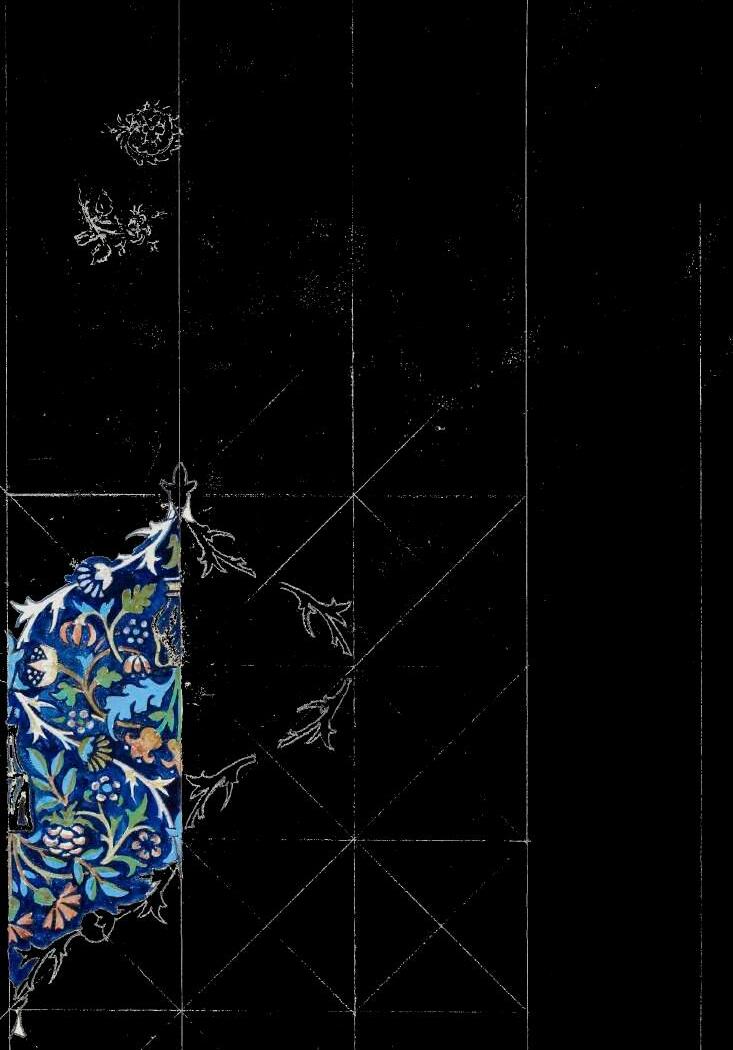
TABLE OF CONTENTS HOW I’VE GROWN TO LOVE MY INDIAN BACKGROUND KHADIJA NEMAZIE REFLECTIONS ON THE SCREEN & STAGE MONIQUE TOON THE PRICE OF LIVING IN PARADISE CAILYN MARI KOERNER BETWEEN FICTION & REALITY NORAH LAYNE EVERLASTING LOBES OF LOVE TARRYN NICHOLS ASIAN DOCTORS, INVISIBLE PATIENTS ISHA HARSHE A GOLDEN OPPORTUNITY AJ JOHNSON & LIANA PROGAR THE LACK OF DIVERSITY SKETCH NEW JEANS ZOEY YOUNG 08 SPRING 2023 | 5 11 14 17 19 22 26 28
How I’ve Grown to Love My Indian Background
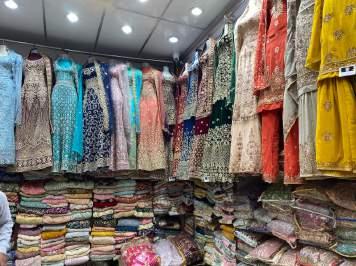


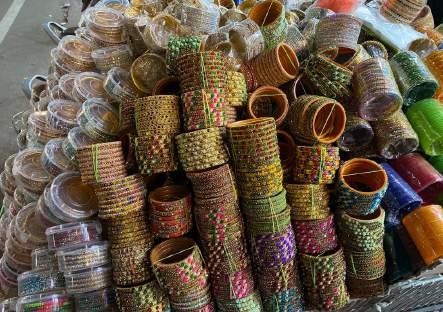
 Written by Khadija Nemazie
Written by Khadija Nemazie
Growing up Indian, my childhood was different than my classmates in school and I would get a reminder of that every day. My friends would watch all the Disney and Nickelodeon shows and I would be watching Bunty Aur Babli or Hum Tum. Like so many other Asian-Americans, I struggled to watch my friends come to school with peanut butter and jelly sandwiches, when I only had leftover Biryani. My classmates’ costumes would be store-bought or homemade and I would come to school wearing Indian clothes and claiming myself to be an “Indian princess.”
TV shows or movies at all. While I was watching Indian movies, my friends would be at the theaters watching Hollywood movies. Although I would dress up as an Indian Princess, I didn’t feel like one until I grew older. I became embarrassed by my Indian background and my cultural differences from friends at school. This feeling stuck with me throughout my childhood until I looked at the big picture. This was my identity.
I first started discovering my identity and falling in love with my culture during my high school career. Once everyone in my grade started caring more about themselves than the other students in my class, I could
My music taste would be wildly different from my friends. I would be listening to Bollywood classics while my friends would be listening to the latest on the radio. I wouldn’t always be in the loop with
take a step back and reflect on my culture. I would look around me and see my classmates proud of their heritage and background and wonder why I wasn’t feeling the same way. I think I truly started falling in love with my culture the more I would get dressed up in my Indian clothes and go to

6 | SPRING 2023
Phots by/ Khadija Nemazie
Design by/ Maliha Versi
functions. The more I got dressed up, the more I realized how different and unique my culture is. I would put on the earrings and the bangles and understand that this was a part of me that should be accepted and I shouldn’t run from it. The earrings and bangles helped me add the final touch to my outfits, almost as if adding icing on the cake or the cherry to the sundae.
Going to India every few years helped me understand the culture and lifestyle more by experiencing things firsthand. I first experienced an Indian wedding when I went to my uncle’s wedding when I was seven and I think that is where my love for Indian weddings started. I remember seeing all the bright decorations and bold clothing colors, hearing the dhol players and music, and smelling the delicious food and amazing desserts. As I started to grow older and go to India as a teenager, I started appreciating the culture and the lifestyle more. I would see how the people around me were proud to be Indian and I wanted to imitate that one day. It was a journey, but I eventually got to a point where I was proud and loved my Indian background.
Finding Indian influencers on social media platforms led me towards loving my culture even more.I was able to gain some confidence by seeing them be so confident in their ethnic wear and jewelry. I also watched them merge western wear and ethnic wear into some daily outfits and now, I do that in my daily closet. For example, I saw this influencer wear jhumkas and bangles





on a regular day, not just for a fancy occasion, with a regular outfit and I tried it out and loved it. I know that this may seem obvious for some people and for people in India, as Indian jewelry is super common there and is readily accessible, but for someone who was disconnected from my culture, it was nice to start somewhere. I guess that is how growing up works, some things that used to embarrass people as children turn into something they are proud of when they grow older.
Now, I am extremely proud of my Indian background. I love Bollywood and Indian content which is so easily accessible through social media. Bollywood music has become trendy as mixes and mashups have been created with American music to make trending sounds, making the songs more popular. Now, it makes me happy to see someone use a Bollywood sound or song as I feel as though I am sharing my love with the world. Bollywood movies, although cheesy and predictable, are one of a kind and nothing will ever be the same as the classics. The classic Bollywood movies are some that I can watch time and time again. Even Indian food is, in my opinion, better than American food. Although it has become hyped and popular due to social media, there is nothing better than authentic Indian food. I still listen to Indian music, but now I embrace it and share it with whoever wants to listen. Now, dressing up in my Indian outfits and wearing all of the pieces with it makes me feel like a true princess.
SPRING 2023 | 7 @just.jully @komalpandeyo cial @hamelpatel_
@sruthijayadevan @sedoso_
REFLECTIONS ON THE SCREEN & STAGE



Reflections on the Screen and Stage




“API Representation in Film & Theatre














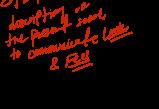



Coming off of one of the most successful years for Asian representation in Hollywood, Michelle Yeoh made history this year as the first Asian woman to win Best Actress at the Oscars. With Asian stars and filmmakers sweeping the award scene with films such as “Everything Everywhere All At Once” and “RRR”, all seems bright in the film world. 2022 was filled with triumphs for the AAPI community, with big budget production companies like Disney creating films like “Turning Red” and “Shang-Chi.”
I wanted to gain some insight on the presence of API people in film and theater, along with their experiences that led them to follow their dreams in the creative space. I spoke with Gregory DeJesus, a junior film student at UCF and Alyssa Scripture, a sophomore studying film as well. The two are working on their own passion projects, with DeJesus currently producing a short film titled “Donna & Crystal” and Scripture aspiring to become a Director of Photography.
“I think this is something that we have been working so hard towards for a very long time, and tonight we freaking broke that glass ceiling. I kung fu’d it out and shattered it, and we need this because there are so many who felt unseen, unheard.”
DeJesus noted that many of his inspirations come from Asian filmmakers such as Satoshi Kon, whose works include “Perfect Blue”, “Millennium Actress” and “Tokyo Godfathers,” and Hayao Miyazaki, best known for his works at Studio Ghibli. Both Kon and Miyazaki are known for their animated features and the way concise and wellwritten stories are woven into their art. Like these directors, DeJesus hopes to one day spearhead and produce his own stories for the big screen.
Scripture mentions Kon’s works as well, along with Daniel Kwan and Daniel Scheinert, the directors and writers for “Everything Everywhere All At Once,” and Boon Jong-Ho, the director of “Parasite.” Both films were received with critical acclaim due to both the performances in the films and technical aspects such as the editing, composition, etc. Scripture goes on to talk about how their personal stories of where they started and where they want to go deeply resonated with her.
With the recent news of the recent Oscar wins, both feel fired up from the triumphs. “Hearing Michelle Yeoh say: this is to everyone who looks like me, to all the boys and girls. I was like, ‘Oh my god, that’s me!’” DeJesus said. Her words resonated with thousands of supporters as she accepted the award, with thousands liking and retweeting her win online.
“I think this is something that we have been working so hard towards for a very long time, and tonight we freaking broke that glass ceiling. I kung fu’d it out and shattered it, and we need this because there are so many who felt unseen, unheard.” Yeoh quipped in a post-award interview.
With notable Asian individuals such as Phillipa Soo, best known for her role as Eliza Schuyler in Hamilton, and Marc deLaCruz, who recently joined the Hamilton cast as the first Asian man to play the lead role, the push for more representation in the theater scene is definitely present.

FADE IN ARTICLE TITLE
APPEARS:
MICHELLE YEOH:
SPRING 2023 | 9
While Asian representation has had its ups, there are still other barriers to consider. For example, the “K-POP” musical featured the first female Asian composer on Broadway, with a plot centered around Korean pop culture. But after just 44 preview shows and 17 public shows, the musical “shut” its doors for good.
With the K-pop genre growing more and more in recent years, many are confused at the lack of interest, with both DeJesus and Scripture saying that they weren’t aware of its existence. DeJesus went on to compare it to Disney’s recent film “Strange World”, a film that primarily featured LGBTQIA+ people of color that also performed poorly due to mishandled marketing. This mirrors some of the reasons “K-POP” closed so quickly, a mix of poor marketing and being unable to retain sales. With such a large cast full of Asian representation, it’s disheartening to see it leave Broadway after only being open for a couple of weeks.
In a 2019 study by the Asian American Performers Action Coalition, also known as the AAPAC, Asian-American representation on New York City stages decreased from 6.9% to 6.3% and merely 4.4% of writers are of Asian descent. The statistics for Asian Broadway Producers is even lower, with only 2.1%. There’s still much to be desired
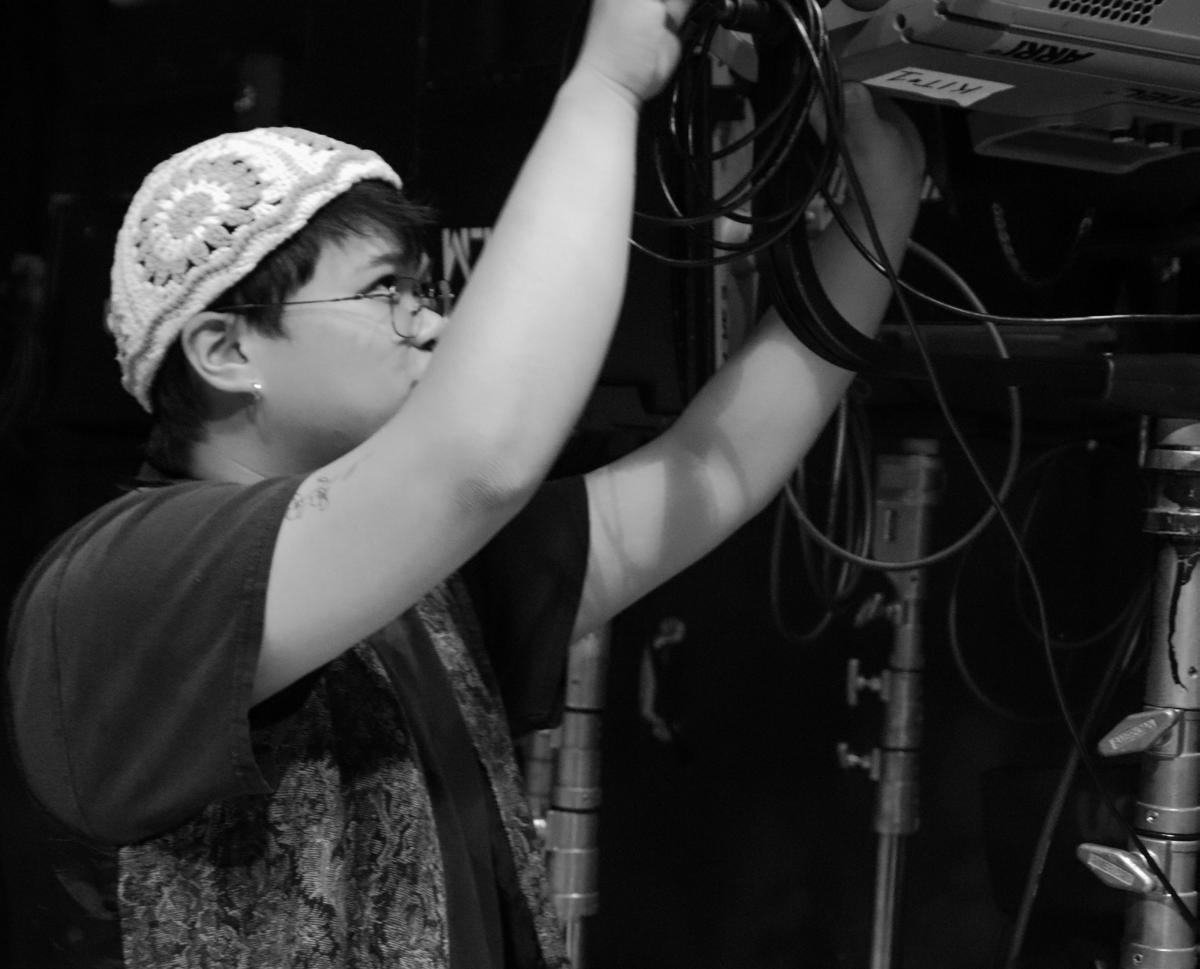
And even with this year’s recent Oscar wins, the film industry still seems lacking. While there have been a total of 1,808 acting Oscar nominations, only 23 of those nominations identify as Asian. Out of that 23, only six have won their respective awards, with Yeoh and her co-star Ke Huy Quan making up two of those awards.


Scripture argues that the industry is still primarily headed by white men, with their influence aiding the low numbers. White elitism is still present in the industry, with DeJesus referencing the phrase “nepo babies” in regards to those in film and theater who’s rise to fame can be attributed to pre-existing connections to the industry. These connections push people to higher positions or






roles, a majority of them being white such as Lily RoseDepp, Maya Hawke and Lily Collins. And getting through the “nepo babies” isn’t the only barrier for AAPI people, whitewashing and yellowface still persists today.
A prime example of this is Scarlett Johanson’s casting in “Ghost In the Shell,” a film based on a popular Japanese cyberpunk franchise. Though the original media and the film itself is set in a fictional city in Japan, even the protagonist’s name was changed from Motoko Kusanagi to Mira Killian to reflect this controversial casting. Similarly, in 2017, Netflix acquired the rights to produce the cult classic manga “Death Note” into a live action film. But rather than choosing an Asian actor to portray the character Light Yagami, instead the name was changed to Light Turner and a white actor was cast instead. The same happened to other characters in the cast, showing no effort to retain the original setting or characters.
“You are doing a disservice to everybody else that wants to see representation of themselves in these pieces of media,” Scripture says.
In stage shows like “Madame Butterfly”, “Miss Saigon,” and “Thoroughly Modern Millie,” Asian characters are played by white actors and actresses using yellowface. With the use of makeup, acting, and garish stereotypical depictions of East Asians, the characters end up as mere mockeries of Asian people. Though many protest the use of it, some still continue to produce these shows in schools and commercial theaters, all while using yellowface.
“Thoroughly Modern Millie” in particular came under fire in 2019 when protests erupted at a highschool trying to put the production on. The musical itself features two Chinese characters, who portray racist stereotypes, along with a white woman disguising herself as a Chinese woman to run a white slavery ring. Even with its controversy, schools and productions continue to produce the show, only halting production when coming under fire.



“It’s an issue that can absolutely be avoided, and it’s glazed over a lot.” Scripture states.











When Asians started being cast, they’d be typecast into roles that ‘fit’ them. These roles are built on a misguided perception of Asian people: the nerdy kid, the soft, submissive woman or the sharp, fox eyed villainess. While things have changed in recent years, we still see the impact these tropes and stereotypes have left on the public image of API individuals.
So, what should Hollywood and Broadway do to fix all of this?
“Uplift Asian artists. There’s so many of us around, just give us a chance. It’s great to choose people who have different stories and new stories to tell— ones that haven’t been
“You are doing a disservice to everybody else that wants to see representation of themselves in these pieces of media”
10 | SPRING 2023
- Alyssa Scripture
The Price of Living in Paradise
When people ask me where I’m from, I am always proud to share that I was born in Hawai’i. I even sometimes joke that it has become a cornerstone of my personality. In my eyes there is nothing more breathtaking than the nature of my home state, not to mention the delicious food (like fresh spicy poke and my grandma’s spam musubi) and mixture of cultures and perspectives. Recommending people places to go sightsee when they visit on vacation was something I would do almost on impulse.
As I have grown older and experienced Hawai’i with a mature set of eyes, my perspective on Hawai’i being a place of paradise has definitely changed. In downtown Honolulu, my grandpa and I would sled down the hills on flattened cardboard boxes. These hills are now covered in tents, where homeless people seek to find refuge from the police. I started to notice signs on the way to the beach that exclaimed “HAOLE, GO HOME!” in bold, black font and Hawai’i state flags flying next to them. Local businesses that had been open for years were shut down and knocked over for luxury condos and hotels. In recent years there have been plenty of Native Hawaiian creators on TikTok and Instagram like Mele (@melemaikalanimakalapua) and Melissa (@mmmeliss_) who speak on issues that their community has been facing for generations, yet are largely being ignored.
The place that I once saw as paradise had actually been crumbling the entire time.

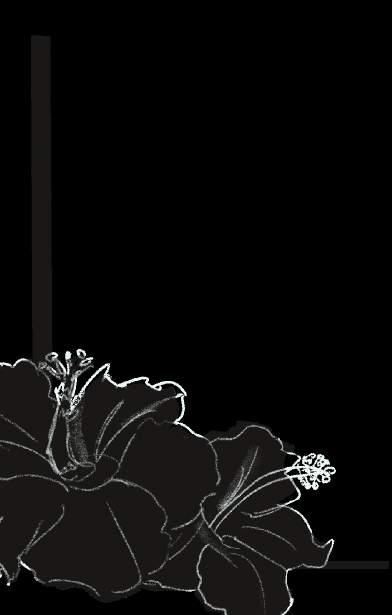



Even as someone who once lived there and stays with family almost every summer break, I had become a tourist myself. I became disconnected to the true spirit of Hawai’i and the most intimate aspects of living there, but also the parts that were not so pretty that needed to be acknowledged.
A Brief History of Hawai’i
Hawai’i was originally discovered and inhabited in 300 CE by settlers from the Marquesas Islands, a remote group of islands located in modern-day French Polynesia. Eventually Tahitians sailed over several centuries later, bringing along plenty of tools, animals and food. The Marquesans and Tahitians combined their rich knowledge of the land, the sea, craftsmanship and farming to build upon their own society. They were cautious to be respectful of their āina and created efficient agricultural and irrigation systems that did not disrupt the surrounding wildlife. They would govern themselves under the kapu system, a strict set of rules derived from mythology and religion. Their culture was exclusively maintained through oral traditions, such as chanting, hula (dance), and storytelling. We refer to these early inhabitants and their descendants today as kānaka maoli, meaning “native person.”
English Captain James Cook’s arrival on the island of Kaua’i in 1778 was the first ever recorded contact Hawai’i had with the Europeans. He and his crew initially had a positive reception as some Hawaiians believed that Cook was the manifestation of the deity Lono, the god of peace and growth. However, after Hawaiians noticed that their community had been ravaged by unknown illness and disease, they realized the settlers were merely mortals and began to resent Cook’s presence on the island. One positive thing that Cook did was record written accounts of his time in Hawai’i and took notes on cultural
by Caitlyn Mari design/ Arianna Flores
SPRING 2023 | 11
practices and attitudes from a Western lens. However, his visit mostly marked the beginning of the end for Hawai’i as an independent civilization. The diseases that Cook and later Christian missionaries had unintentionally introduced ended up wiping out more than 80% of the Hawaiian population within a century and resulted in a massive change in societal structure and harmony.
Cook’s death initiated increased levels of in-fighting amongst Hawaiian chiefs. King Kamehameha was the first King of the Hawaiian Islands. After a series of battles he won against other Hawaiian chiefs, he managed to unite all of the islands together as one nation: the Kingdom of Hawai’i. PBS reported that the rulers who followed him made great strides in terms of progress in Hawaiian society: Hawai’i would gain international recognition as an independent nation, the literacy rate would grow to 91-94% in less than 15 years, and electricity for the royal palace and private homes were installed 5 years before the White House. Hawaiian practices such as hula, genealogy, traditional healing, and storytelling would be revived during this cultural renaissance.
There was still strife during this time of progress. The missionaries who resided on the islands would plot against Hawaiian royalty under the premise that Hawaiians were savages and unfit to rule. They wanted to only give American and European business parties political power, not to mention their goal to establish Christian values as the foundation of society. Voting rights were only granted to those who already owned land, which excluded a good chunk of Hawaiians. This all came to fruition when the missionaries overthrew King Kalākua in 1887 and forced the king to sign their own constitution, formally called the Bayonet Constitution.
Queen Liliuokalani was the last reigning monarch of Hawai’i. After speaking with multiple citizens who were distressed due to the Bayonet Constitution, she decided that she would draft a counter-constitution. Haole businessmen heard about her plan and overthrew the Hawaiian Kingdom with the help of the U.S. Navy in 1893. Sanford B. Dole–an American lawyer and jurist–would be named president in 1894. Despite efforts among Hawaiians to protest against annexation, Hawai’i officially became a U.S. territory in 1898.
After the takeover, multiple changes took place. Their agricultural systems were hijacked and restructured, which radically changed Native Hawaiian diets and disrupted the wildlife. Haoles owned sugarcane and pineapple plantations where Native Hawaiians and immigrants from Japan, China, the Philippines, Korea, and Portugal would work. The haole leaders would force Native Hawaiian and immigrant kids to assimilate to Western standards through the education system. If Native Hawaiians were caught taking part in their ancestral practices, they would be heavily penalized. This would prove to be a massive challenge to the Native Hawaiian community since most of their traditions were not written or visual; it would be difficult to accurately record.
The Current State of Hawai’i
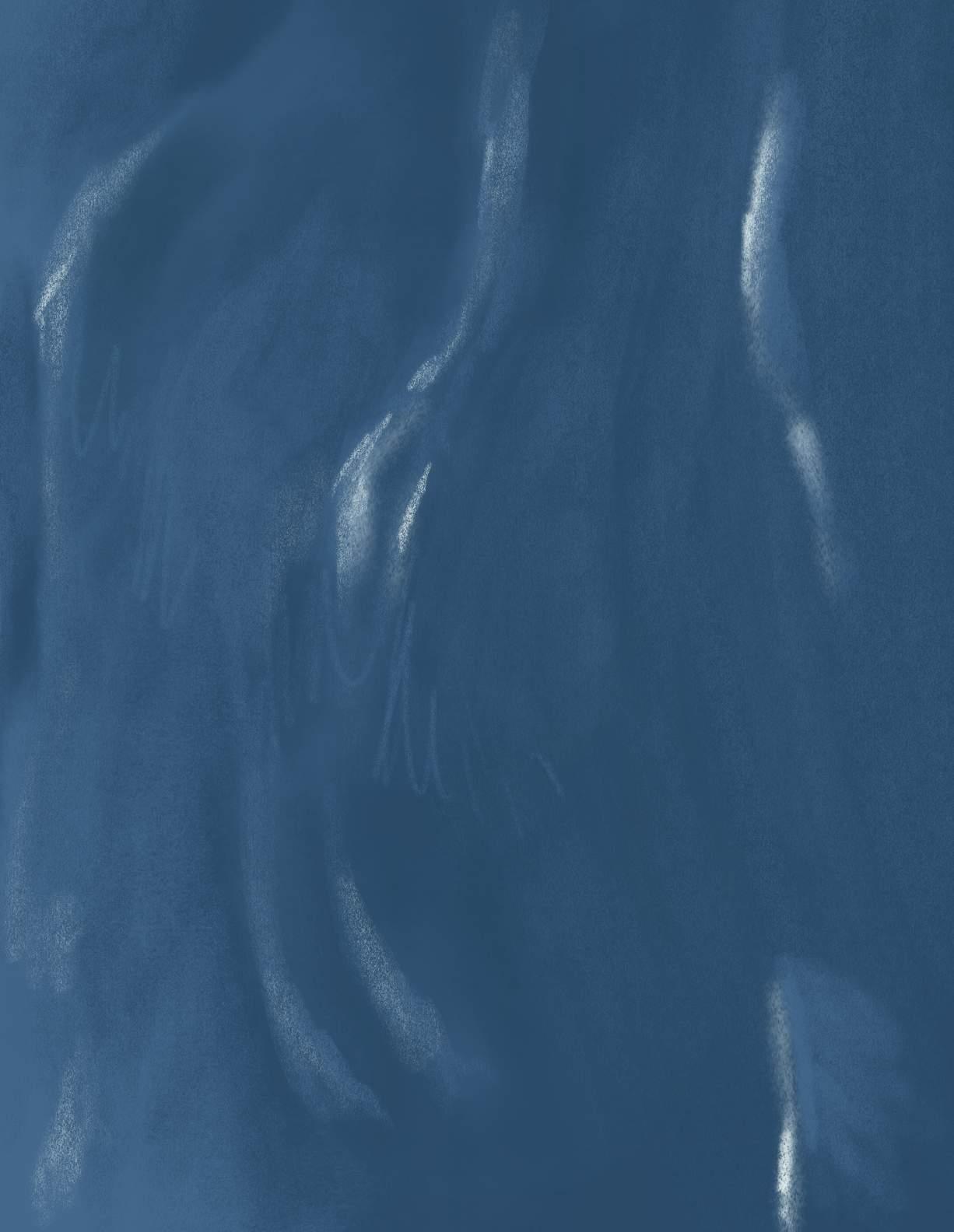
My uncle and I were waiting in the turn lane on the intersection of Haiku Road and Kamehameha Highway in Kaneohe, the town my family has lived in for decades on the island of O’ahu. We were tasked with going to the nearby Safeway to pick up some groceries for dinner.
I turned my head to the Safeway parking lot as the car lurched forward. What I saw next boggled my mind: there were at least six or seven white people loading up their cars, walking around, driving back home, just minding their own business. If Kaneohe were anything like Waikiki or Kailua, I wouldn’t have thought about this twice. Kaneohe is very different from those touristy spots. It is not lively at all and is rainy a lot of the time since it’s on the Windward side of the island. When I was growing up (and even until a couple of years ago), the only people I would see were mostly Asians and a few Polynesians. Locals. Most of the houses were built in the 1960’s to 1970’s and while there were a few big nationwide chains, most of the restaurants and businesses were local. The only thing I thought could explain this was the Marine Corps base nearby, but even then they have a base exchange with a massive supermarket and department store, so they could buy everything there.
“Hey, Uncle Dan, since when did Kaneohe have so many haoles?” I asked as we drove back to the house. He chuckled.
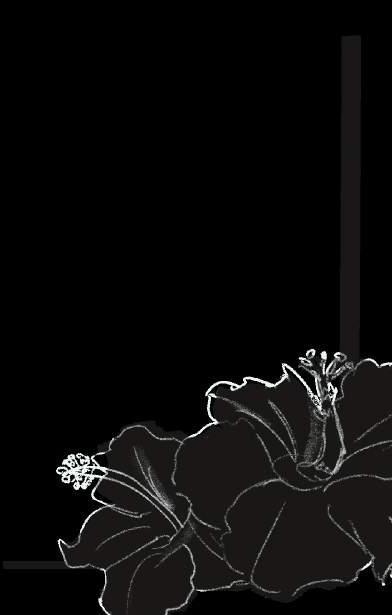
“Caity, it’s so funny you mention that. There’s been a decent amount coming over from the mainland. I talked to a couple that just moved in, nice people. They have a Tesla. Bought the house for a million bucks. Crazy, right?”
It really was not crazy to imagine at all. According to Zillow, the average price of a home in O’ahu is a whopping $834,569 while in Florida the average is $377,706. My own grandma’s house is valued at almost one million dollars on Zillow even though it’s a single story home, only has air conditioning in two rooms and was built sixty years ago. It was only valued at $559,600 ten years ago. These prices seem even wilder when you look up the average household income in Hawai’i, which is around $88,000. The U.S. Census Bureau reported that, on average, an individual’s annual income in Hawai’i falls around $39,000. To top all of this off, Hawai’i has the highest cost of living rate in the country, ranked 184 out of 200 points. Not only is it the most expensive state to live in, but the average household income can barely support mortgage payments, groceries, healthcare, and other essential costs.
I snort. “But why Kaneohe of all places?”
“Cuz, Kailua is too expensive now! Kaneohe is the next best spot. It’s got a nice view. Schools here are decent. People are moving out anyways…” He went on to explain more, but I zoned out for the rest of the ride. Hearing that Kaneohe was simply a runner up to Kailua just for convenience and
12 | SPRING 2023
affordability made me feel…empty. Kailua had just gained a Target in 2015 and a Whole Foods in 2012, officially sealing the gentrification deal. Imagining a point in time where Kaneohe ends up like Kailua–heavily touristy, crowded, and pricey–felt like getting punched in the gut. The possibility of my family and thousands of other people’s childhood memories and property being erased at the hands of some rich mainland or foreign investor made my skin crawl.
Hawaii News Now reported that as of 2015, 24 percent of homes sold in Hawai’i went to U.S. mainlanders and 4 percent were purchased by foreign citizens. While this may not seem like that much, it is simply marking the beginning of a trend in purchasing. As homes and condos in Hawai’i are growing more expensive, it is due to the external demand to live there. Hawai’i is already limited in terms of land, imports, and utilities such as water and electricity. If the average salary in Hawai’i is barely even $40,000 and the recommended salary to live there is around $120,000, locals are screwed.
These high costs affect certain populations more than others. Researcher Noah Jordan Magbual found that Native Hawaiians and other Pacific Islanders (NHPI) only consist of 11.7% of Hawaii’s population yet have a poverty rate of 15.4%. It is even more grim that out of all the homeless people living on O’ahu, 50% identify as NHPI. Now NHPI are being forced to relocate to the mainland even when they want to stay in their rightful homeland. Another notch in the belt of humiliations and loss that the Native Hawaiians have faced since their wrongful occupation began.
The tourism industry and the housing situation work hand in hand. Magbual emphasizes the role of Hawaii’s largest industry as being a disguise for neo colonial ideology that keeps Native Hawaiians disenfranchised. The overwhelming presence of hotels, condos, and mansions on the shoreline in addition to vacation rental units (VRUs) like AirBnb spots take up even more space for what could be homes for NHPI.
The tourism industry also upholds harmful stereotypes about Hawaiians. Everywhere you go in Waikiki or other touristy areas, you see caricatures of Native Hawaiians in grass skirts standing outside of grass huts, tourists wearing flimsy, plastic flower leis and the nearly identical, generic ukulele music being blasted in the streets by 12 different ABC Stores. Pono Sugunama– a Utah State University honors student–writes in his thesis covering the portrayal of NHPI in film that Native Hawaiians are portrayed as large, lazy people who sing and play ukulele all day. The women are viewed as hypersexual, voluptuous hula dancers. One common element is the notion that Native Hawaiians welcome haoles with open arms, always extending the spirit of aloha, reducing them to beings that are forever consenting and have no will of their own, outside of what haoles want.
Melissa Akoni (@mmmeliss_ on TikTok and Instagram) explains this phenomenon to journalist W. Kamau Bell on his television show United Shades of America with W. Kamau Bell:
“If you’re touristing, you are
directly contributing to an industry that commodifies and bastardizes our culture, uses us as an aesthetic, tells us what parts of us are pretty, but we’re your servers. We’re here to entertain you, we’re here to take care of you, and you know… just give, give, give, but you don’t need to give anything back!”

Some people believe that there is an alternative to traditional tourism, dubbed “sustainable tourism.” Proponents of this tourism model assert that by “traveling consciously” and going to a few local businesses during a trip will be dramatically different for the environment and the people living in Hawai’i. However, I would argue that not going at all would be the most ethical option. Native Hawaiians are online begging people to not come and giving them multiple, fact-supported reasons. Sage Crystal notes in their essay Please, Don’t Move To Hawai’i: “Each unnecessary interaction drives up the cost of living and resources for those living there, and droves of longtime residents are forced to leave because of the cost of living.” If someone really would like to support Hawai’i in an ethical way, either do it from a distance and donate to Native Hawaiian organizations or purchase from Native Hawaiian businesses online.
Of course, it would be impossible for all tourists to know about these issues and the historical context that surrounds them. Native Hawaiian history was not adequately taught in plenty of places (including Hawai’i for a long period of time). Thankfully, social media has been a huge help in spreading the word on these topics and has persuaded many to call off their trips. I myself have learned plenty of important things from social media and it has inspired me to research more into Hawaiian history and inform myself on issues that I was not exposed to during my time in Hawai’i. While the present looks bleak, hopefully the future will be a bit brighter for Native Hawaiians–and not because of the new fluorescent Target sign shining across the street.
Vocab List:
āina: land
aloha: can be used as a greeting or as a word for love, affection, peace, compassion, or mercy

haole (HOWLY): foreigner (used commonly to refer to white people)
spam musubi (MOO-SOO-BEE)i: a local take on japanese omusubi. nori, white rice, and fried spam are the foundational ingredients. some people (i.e. me) like to add in furikake and teriyaki sauce. scrambled egg is another common ingredient
poke (PO-KEH): a hawaiian dish made from tuna, soy sauce, Hawaiian sea salt, green onions, Maui onions, rice, and limu
SPRING 2023 | 13
Between Fiction and Reality
Interviews with Victoria Ying and Farah Naz Rishi

Content Warning: Mentions of Eating Disorders & Death
There is no way to truly describe the feeling of having someone experience the same things you have, the feeling of someone understanding what you’ve been through and assuring you that you’re not alone. Often, fictional pieces reciprocate these feelings almost flawlessly. Though, while fictional, there is truth buried deep within the pages because there are humans who experience and feel just as we do between them.
Critically acclaimed authors, Victoria Ying and Farah Naz Rishi discuss their inspirations, hardships and what it means to write fiction and build stories as Asian-American creators. Ying, a Taiwanese-American creator who fell deeply in love with illustrative storytelling at a young age, and Rishi, a PakistaniAmerican writer who found comfort in spinning stories, both speak about the importance of writing with a purpose.
I asked Ying and Rishi to describe where the line is drawn between reality and fiction for each of them, and how much of themselves they put into their work. “I think it’s almost inauthentic to not include at least some of yourself. I think that’s why there are certain authors that we tend to connect to… they almost feel like a friend to you. I would argue it’s not possible to completely cut the author out of the writing. I don’t necessarily believe in the death of the author,” said

“Fiction can tell us something about ourselves; it teaches us how to ‘be’.”
—Victoria Ying
by Norah Layne design/Asma Ahmed
14 | SPRING 2023
Characters ©Victoria Ying
I wondered if they felt obligated to share a part of themselves in their stories, because someone may find comfort in connecting with similar experiences as an Asian American. As Ying, Rishi and I spoke more about their individual novels, I asked how growing up Asian-American has affected the way they write stories. Ying said that for a while she didn’t think she had anything to say to this particular question, and instead she thought to keep her head down and be successful. “But then I actually took the time to think about my experiences and how they were unique,” Ying said. She mentioned her newest story
eating disorder, understand her family, and learn how to love herself. Ying mentions that she does sacrifice a lot of herself in this novel. Because the cultural conversations around eating disorders were and still remain so different in immigrant culture, Ying felt that it wasn’t reflected in any of the media she consumed, and she wanted to change that. She wanted to tell a story and make sure people knew that they weren’t alone.
For this same question, Rishi added, “I have a lot of pride in being Pakistani-American and Muslim. It kind of breaks my heart a little bit that there’s still such a substantial lack of representation in literature. So, of course, I want to do everything I possibly can to help bridge that gap even if I’m just a drop in the ocean. I also think that a lot of authors who are marginalized, not just Asian-Americans, not just Pakistani-Americans, but all marginalized authors kind of struggle with this idea that, because there is such little representation, our books have to somehow represent everyone within our group, which obviously isn’t possible. There’s quite a bit of balancing that constantly has to be done and so that’s been a bit of a struggle. But once we do find that balance, we will be freed from this expectation of representing everyone, which is impossible.” There will never be a moment where one can represent all.
After establishing that some expectations are unrealistic within the realm of fiction, we dive into the realities of working in a creative field as AsianAmerican women. Ying said, “I think that our culture has made it so that if you want to be a creative, you want to be a creative who makes money. So, I do think there were a lot of Asian Americans who were animators or artists who wanted to be creative but also have stability. I think that the biggest problems were definitely when people would either compare us to each other or think of us as the same category, even though we were different people.”


Rishi said, “I do think that, unfortunately, people tend to look at Asian-American women as subservient and quiet and therefore, far easier to take advantage of and I find that to be the case in every industry, not just publishing. I definitely noticed that, unfortunately, I have been treated quite differently than my peers.”
Both authors also reflect on the Covid-19 pandemic and the insecurity and discomfort that came with it. “The pandemic has been extremely difficult. A lot of my love for writing comes from this feeling of empathy and wanting to connect with other people, and to kind of say the things that I feel, that we’re all feeling. Because of the pandemic, it feels like a lot of people have become un-feeling. That people might not care for each other as much as we hope. So that’s been difficult, tapping into that frustration,” said
“I think you have to be specific to get universal. You can’t be generic and try to add details, you have to go too far and pull it back. So I wanted to be as honest and specific as possible.”
—Victoria Ying
SPRING 2023 | 15
characters © Farah Naz Rishi character art by Zahra
Fatimah
Rishi. She mentioned that when she started her writing journey, her life was almost in shambles. She dealt with the deaths of her father, brother and mother in the span of a few months. So for her, writing through death after death had been really difficult. Rishi added, “I keep coming back to the word empathy because I think it is crucial to being a good writer. You have to trust and love your reader, and they have to trust that not only will you make a good story in the best way that it can be written, but you’re not necessarily going to hurt them, they have to trust that you’re going to tell the story the way it needs to be told. In order to get them to trust you, you have to have empathy.”
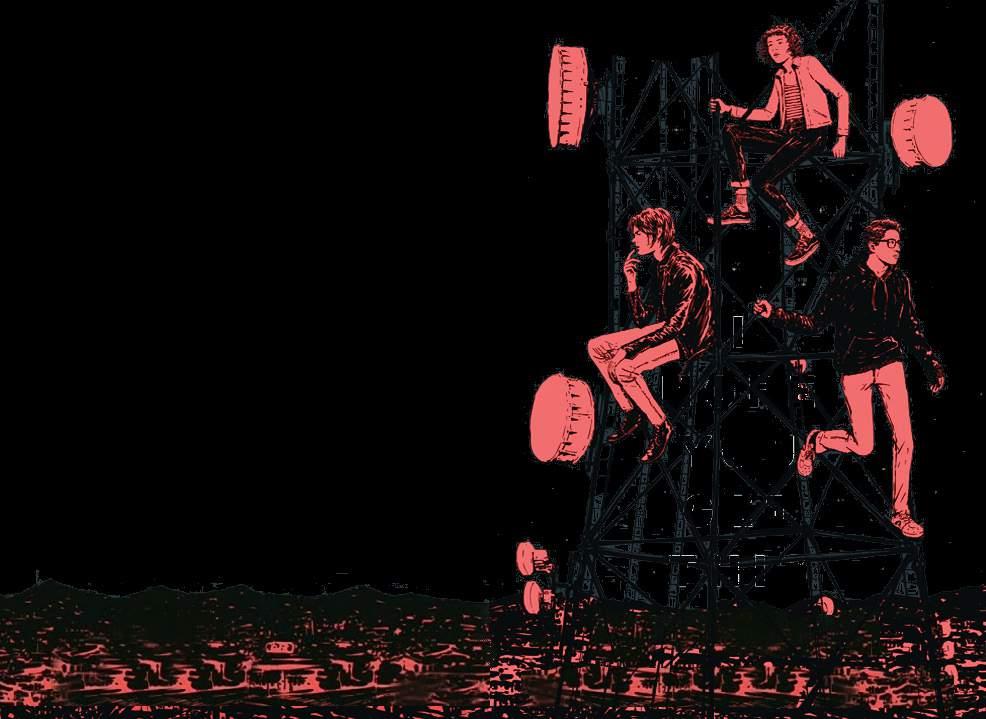
I was excited to ask Ying and Rishi about their inspirations. I wanted to know who inspired and fueled their creativity through hardships and periods of doubt. For Ying, authors like Octavia Butler, Kurt Vonnegut and Victoria E. Schwab are to credit. She mentioned that Schwab’s work made her “rediscover her love for fiction because she had lost that.” Rishi greatly credits Sabaa Tahir, a successful PakistaniAmerican YA author. Rishi said, “Everything that she writes feels like she’s speaking directly to my heart.” They also mention authors Jonathan Stroud, Charles De Lint, bell hooks and T. Kingfisher.

“I keep coming back to the word empathy because I think it is crucial to being a good writer. You have to trust and love your reader, and they have to trust that not only will you make a good story in the best way that it can be written, but you’re not necessarily going to hurt them, they have to trust that you’re going to tell the story the way it needs to be told. In order to get them to trust you, you have to have empathy.”
16 | SPRING 2023
—Farah Naz Rishi
Ev lasting LOBES of LOVE
 written by Tarryn Nichols
written by Tarryn Nichols
In ancient Asian mythology, ginkgo biloba leaves symbolized love and longevity. How do these tales from ages past compare to modern-day love and relationships?
Lin Daiyu gingerly lifted the box crafted from ginkgo leaves, her hands buzzing with anticipation. “One last look,” she thought, as her eyes caught the last lines of a poem she had inscribed on the underside of the lid:


“The very sight of you dissolves me to tears. These are leaves of a tree I plucked for you. How many ginkgoes grow on river islets?”
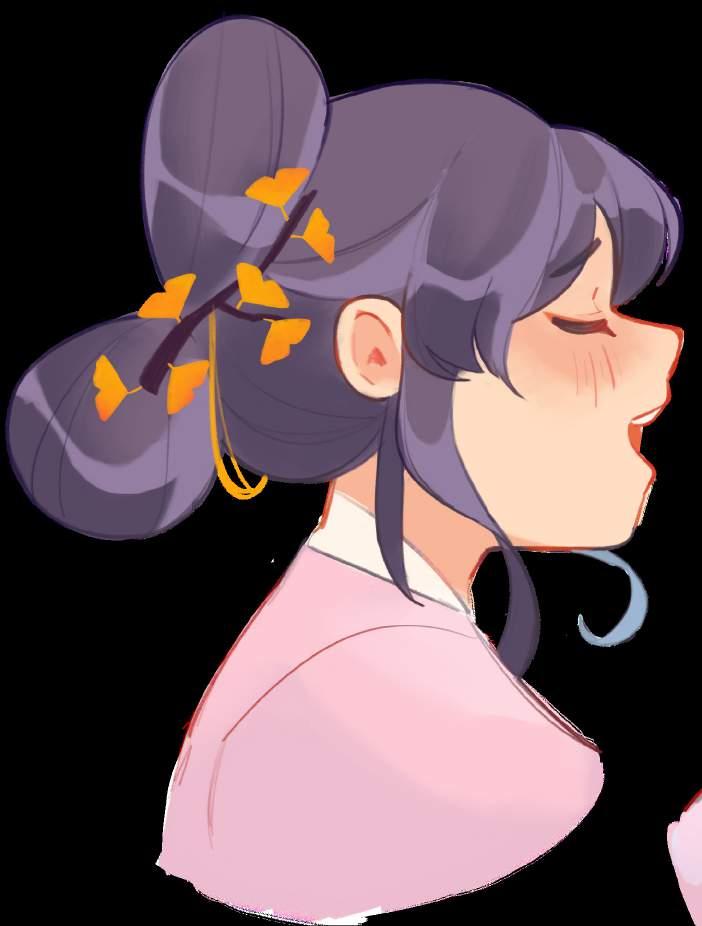

She clasped the cover shut, enclosing inside a lengthy letter written with a silver pencil and golden inkstone. Her thoughts strayed to Jia Boayu the way a river flows to the ocean. Would he accept this token symbolizing the depth of her feelings for him?

This scene hails from the famed 18th-century Chinese novel, “Dream of the Red Chamber,” in which Lin Daiyu gifts Jia Baoyu a box of ginkgo leaves as an expression of her love. The two were kindred spirits with a shared love of the arts, despite both contending with intense familial and societal pressures. Their relationship was a powerful expression of the tension between love and duty, passion and tradition, and the search for meaning and connection in a complex, cold world.
In many tales of Asian mythology, ginkgo biloba leaves represent pure love and eternal commitment. Like the intertwining halves of the Yin-Yang symbol, the two symmetrical, fan-shaped lobes of the ginkgo leaf merge at the petiole as a sign of harmony amidst opposing forces. The ginkgo biloba leaf carries a more unique charm in flower language. Its two-fold shape reflects the balance of contrasting energy in relationships– passion and patience, independence and unity – after “a lifetime waiting” for the right partner. This makes it a perfect choice for expressing one’s undying affection. While the ginkgo tree can survive even when planted alone, it cannot reproduce, emphasizing the importance of unity and companionship in life.
photo by/ Carolina Tortorelli design by/ Tiffany Vivi Nguyen model/ Lesley Banh and Ron Osario
SPRING 2023 | 17
Now, the way to someone’s heart might not be ginkgo biloba, but boba instead. When Ron Osario first saw Lesley Banh after being paired together for a secret santa gift exchange, his first thought was, “Oh, she’s cute!” The two met at a joint event hosted by their respective Asianinterest fraternity and sorority where they successfully hit it off. Ron, dripping with extra dough from his new job as a medical scribe, decided he would “ball out on this girl” and showered Lesley with Gator gear, gift cards and a boba cup from Teastori.
Four years later, their focus is on their future together. Banh and Osario explained that having “similar ambitions” is what attracted them to one another – both are majors in health education, hold strong family values and are first-generation students with a love for dance.
On the flip side, navigating cultural differences as a Vietnamese and Filipino couple has been both a challenging and rewarding experience. The two cultures share many commonalities but vary in terms of social rigidity and traditional roles. Banh even said she was “very lucky” her mother was accepting of her having a Filipino partner, as many Vietnamese parents prefer their children to marry within the culture.
“Growing up, my family was very traditional – as in, there were still gender roles. My mom told me how to cook and clean, how to be a mom, how to be a housewife. I was always prepared for those duties. So when I met his parents, I helped out in the kitchen,” Banh explained. As for the expectations of a man coming into her family, Osario checked off the box of financial security through his promising future career as a physician assistant.
On Osario’s end, he said he experienced minor pushback from his family regarding how they manage finances and home duties. These pressures did not stop them from building an equal partnership and dividing up the responsibilities prescribed to their roles. “I love cleaning– it’s one of my favorite things to do. In terms of cooking, I’ve learned to cook Vietnamese food, too. So, I don’t just let her prepare stuff in the kitchen. I don’t show up just to eat. I actually want to be able to do this on my own and help out in the future when we have kids.”
In Filipino culture, harana is a traditional display of love in which a young man “bears his heart in song” to a woman. That’s why when Osario sheepishly

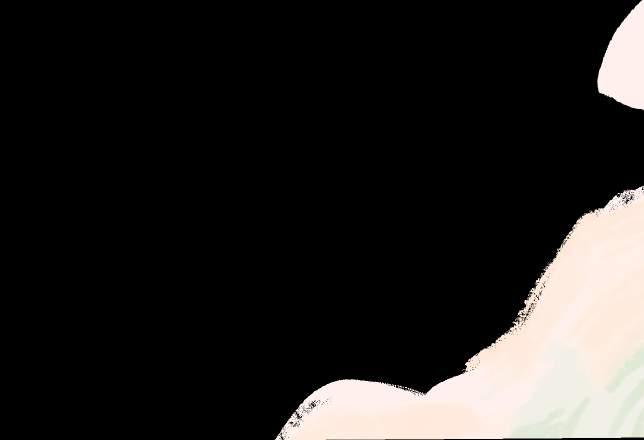

serenaded Banh at karaoke in front of his family, it was partly to include her in a homage to his roots. Karaoke is one way the couple connects over their separate customs, along with sharing food dishes and wearing traditional clothing such as the Vietnamese ao dai.
Mae Delassantos, a third-year civil engineering major, speaks on her longdistance relationship with her partner of five years. “With Asian culture, there’s an essence of ‘giving’ when being close to someone. We aren’t able to give each other the same attention other couples do, so when we do see each other it’s a big deal.” Despite the couple treasuring their time in person, living hours apart inevitably causes them to miss out on fostering close relationships with each other’s families — a keystone of Filipino culture. However, this same distance allows them to be more independent and focus on their personal goals outside of the relationship.
“In the past three years, there have been so many technological advancements towards supporting long-distance relationships,” Delassantos continued. This was largely spurred on by the COVID-19 pandemic because a majority of people had to maintain communication with loved ones solely through online channels.
A date doesn’t just mean going to the movies or dinner, it could also be a night spent gaming with your significant other on a shared Minecraft server while bantering over the headset. There are tons of two-player games out there that make it easy to connect with a partner through teamwork and simple fun. As a bonding pastime, Delassantos and her boyfriend play “Portal 2” and “It Takes Two” together on top of the more sociable games they play with their online friend group.
Unfortunately, cut up fruit for someone as an apology over the phone. In Delassantos’ words, showing affection in Asian culture involves many “little acts of love.” There is sometimes a disconnect with older generations when it comes to understanding long-distance relationships. They view separation as simply a drawback rather than an indicator of a strong relationship. While keeping the future in mind is important, solid communication and showing love when physically apart are fundamental. In fact, you can express those acts of love “by your own rules” as Delassantos continued, “whether it’s sending them a meme that reminded you
of them or doing a check-in, I think those little acts have more weight in a longdistance relationship.”

While the face of love has greatly changed in modern times, the same challenges persist in dating and relationships among Asians. Osario and Banh are an example that cultural differences can be grounds to strengthen their connection. In another way, Delassantos and her partner show that love nowadays is not restrained by physical distance or cultural expectations.

The ginkgo leaf’s form has inspired many artists from around the world, one famously being Johann Wolfgang von Goethe. In his 1819 love poem, Ginkgo biloba, the lines
To take a lesson from the ginkgo biloba leaf, Delassantos advised that “it’s important for younger Asians going into relationships to have independence from their parents’ expectations. Find what you want and embrace that.” Striking a balance between modern norms and tradition when dealing with cultural expectations may be complicated— just as complicated as nurturing both autonomy and connection in a partnership. Thankfully, reaching this harmony makes way for lasting bonds and finding peace with one’s identity.

18 | SPRING 2023
“I have found a sense that’s true: Is it not my song’s suggestion, that I’m one and also two.”
Asian Doctors, Invisible Patients
Asians and Asian Americans are a prominent cultural group as healthcare providers, but why not as patients?
“May I always act so as to preserve the finest traditions of my calling and may I long experience the joy of healing those who seek my help.” A sea of bright white coats with shining smiles looks up from their pamphlet, eyes determined but understanding of the oath they have just taken. A rite of passage for incoming medical students, the white coat ceremony is the moment I have dreamt of for years. The day I yearn to smile with pride, a culmination of the efforts of the past four years, and the beginning of the new challenges of the next four.
As an Asian American, my career path of medicine is not necessarily a novel one. Rather, many would argue it is stereotypical. While Asians make up about 7% of the United States (US) population, they constitute over 17% of current practicing physicians, and thus, Asians are considered to be the “overrepresented” minority in medicine. However, the drive to providing medical care as an Asian is met by a lack of drive to seek and receive medical care as an Asian. This situation sets up a paradox: while Asian Americans are considered “overrepresented” as medical providers, they are underrepresented as patients.
Asian Americans: The Invisible Patients
A 2021 study published in JAMA Internal Medicine found that Asians/Asian Americans lag behind in visiting 26 out of 29 medical specialties, and make up a significantly lower portion of visits in 21 of those specialties. Some examples of these specialties include pulmonology, hematology, and otolaryngology. There are a multitude of reasons as to why Asians are reluctant to seek medical care. One of the first issues that comes to mind is that of cultural competency. Language barriers, especially, prevent Asian patients from receiving optimal care and creating bonds of trust with their providers. As a volunteer at Moffitt Cancer Center, I watch a lot of patients undergo CT scans. I remember the case of a Vietnamese patient who could not speak or understand English very well. His translator could not accompany him to the CT scan because of the exposure to radiation, and the CT technologists did not know how to speak Vietnamese. During the procedure, patients are instructed to hold their breath for a certain period of time as they undergo the scan and are told when they
can release their breath. The automated scanner voice came in a variety of languages, but not Vietnamese. Without another option, the technologists just used the English voice. The patient could not follow the instructions properly and did not know when to hold his breath, which then hindered the quality of his scan. An unclear image could prevent his doctor from being able to read the scan causing them to potentially miss important insights from the image. This story is just one example of how a simple language barrier could lead to exacerbated consequences, potentially governing the difference between life and death.
Cultural competency as a whole is also important to consider when discussing sensitive issues with Asian and Asian American individuals. Taboos around mental and sexual health make it difficult for Asians to take the step towards receiving care in these areas. According to the American Psychological Association, only 8.6% of Asian Americans were found to seek mental health services, compared to 18% of the general population. An article from Pfizer states that Asians are the least likely to report having a personal or primary care doctor. Even at these primary care visits,
written by Isha Harshe design/ Isha Harshe
SPRING 2023 | 19
many doctors fail to discuss lifestyle and mental health with their Asian patients. Primary care providers are considered the “first line of defense” when it comes to detecting medical issues - but if they are unable to pick it up in Asian patients, who will? Differences in Eastern and Western medical practice can also make it difficult for Asian patients to seek medical care in the US. Eastern practices are rooted in holistic well-being and herbal medicine. Conversely, the Western allopathic medical model, rooted in pharmaceuticals, makes many Asian families distrustful of the quality of medical care they may receive in the US.
Role of the Model Minority Myth
The model minority myth perpetuates the barriers to medical care that Asians face in the United States. The model minority myth portrays Asians to be a highly successful but politically quiet immigrant minority group, setting up high expectations that are often unachievable. This mentality also groups all Asian ethnic groups under one monolith. In fact, health disparities exist between specific Asian ethnic groups, and these tend to become masked when all Asians are grouped together. For example, according to Pfizer, U.S. born Vietnamese women are four times more likely to die of breast cancer than their other Asian counterparts. U.S. born Korean
children are four times more likely to not have medical insurance than other Asian groups. Last
each Asian subgroup also has different medical needs that must be addressed by their providers.
year, I took an Introduction to Health Disparities course, but the health disparities faced by these specific Asian groups were never mentioned. A study published in 2022 in JAMA found that Asians were often misrepresented or omitted in medical school curriculum. The study provides the example of Type 2 Diabetes, which is seen in a wide range of prevalence amongst Asian subgroups, from 12.6% in Indians to 5.6% in Chinese individuals. Despite these differences, the authors point out that there is a relative lack of specific mention of Asian Indians in medical school curriculum, furthering the perspective of Asians as mainly East Asian populations. Future doctors are not being accurately trained on how to treat specific Asian populations, despite Asians being the fastest growing minority group in the United States. Although the wide range of ethnicities that identify as Asian allow us to unite as one race, it is also important to recognize that
Pass the Megaphone
If Asians and Asian Americans make up such a large part of the medical field, why are we seeing these disparities in Asians receiving medical care in the US?
Kimbell Kornu, MD, PhD, who identifies as Texan-Thai-Chinese, shares that while Asians are considered an “overrepresented” minority in medicine, we are actually quite invisible in the medical world. Our stories are not told, and thus our issues are not identified. He goes on to share his story of having a conflicted identity, being subject to racial slurs that left him feeling not quite American, but cultural and language barriers that left him feeling not quite Asian either. This is a dilemma most of us are all too familiar with. One of his main arguments in this article revealed the impact of the intersectionality between being a physician and being an Asian American. In the medical world, it is traditionally valued to be quiet in the face of conflict, to always agree to the decisions of one’s superiors, and to view resilience as the only
20 | SPRING 2023
“Change starts with us having the courage to tell our stories, to own the spaces and positions that we are in.”
option in the face of hardships. These same values are upheld in most Asian cultures. Thus, when Asian Americans enter the field of medicine, these values reinforce each other as the two identities merge. We are conditioned to stay quiet in the face of our own suffering both as Asian Americans and physicians. So how can we expect our concerns to be raised? How can we expect that we will be given the attention that we need? Racial slurs and culturally insensitive comments have been a staple experiences for most Asian Americans growing up in school, and these experiences follow well into adulthood in most people’s careers. The rise in hate crimes we saw during the COVID-19 pandemic were an exacerbation of an already existing problem. However, if we don’t raise our voices against these injustices, we cannot expect a change. A
culturally competent care for Asian Americans, we must hold academic leadership positions. Change starts with us having the courage to tell our stories, to own the spaces and positions we are in. Like Kornu, we must make an effort to make the Asian American presence in medicine not just a statistic but a narrative experience worth sharing.
Bridging the Gap
As an Asian American student pursuing a career in medicine, I often felt conflicted about my career choice. I was clear in my motivations to become a physician, but unclear on how others would perceive my career choice. Do people think I am just following an expectation, a path laid before me, when the truth is that I choose to become a
family members might joke about receiving free medical care from us after we become doctors, it’s important for us to use those conversations to reinforce that we, as Asian Americans, should go see our doctors. Our presence in the medical field as Asian Americans is important in allowing Asian American patients to feel more comfortable in approaching us as their doctors. We can use our identities as a way to break down the cultural and language barriers that many Asian and Asian American patients face when trying to visit their doctors. Even though many of us have our insecurities regarding our language abilities, a familiar face can make all the difference for another Asian American patient. Having the same culture symbolizes a shared experience, a place of trust in valuing each other’s experiences and personal insecurities that may have stemmed from cultural experiences and expectations. This trust is the crutch of every patient-provider relationship, and the most sacred aspect of the medical world.
commentary from Dr. Augustine
M.K. Choi and Dr. Anil Rustgi, the deans at Weill Cornell Medicine and Columbia Vagelos College of Physicians and Surgeons, revealed that Asian Americans are not well represented in leadership and diversity efforts in academic medicine. In order to enforce changes in medical school curricula to include
physician, from my own desires? Do I have a chance to contribute anything to the medical field, when there are so many Asian American physicians already in practice? Can I still be special and leave my mark?
The truth is yes, we have our work cut out for us. While our
When I don my white coat for the first time this year, I know a complex whirlwind of emotions will overtake me. Perhaps the most prominent emotion will be that of responsibility. The white coat is a symbol of the trust patients will put in me for their most valuable possession: their life. And the undertaking of that responsibility, for all lives, is what unites us as doctors. So to my fellow and future Asian American doctors: let’s roll up our sleeves, snap on those gloves, and hold our heads up high because we’ve got lives to save.
SPRING 2023 | 21
“We are conditioned to stay quiet in the face of our own suffering both as Asian Americans and as physicians.”
A GOLDEN OPPORTUNITY
12.06.2022





GOLDEN CHILD
written by: Liana Progar|AJ Johnson
photos by: Liana Progar|AJ Johnson|Nathan Swinburne design by: Aryam Amar
Back in Dec. 2022, K-Pop group Golden Child embarked on their Meet & Live Grand America Tour. Three Sparks Magazine members attend the Orlando concert for two very different reasons. Sparks’s photographers AJ and Nathan, applied and received the tour company’s press pass, allowing them to attend concerts for a short period of time for free. For AJ and Nathan, they said this would be their first time photographing a big concert, making it a new and exciting experience. On the other hand, Liana, Sparks’ writer and a fan of Golden Child, was overjoyed to have the opportunity to see Golden Child without having to travel to a different state. These two reasons created different yet similar experiences for the Sparks members.
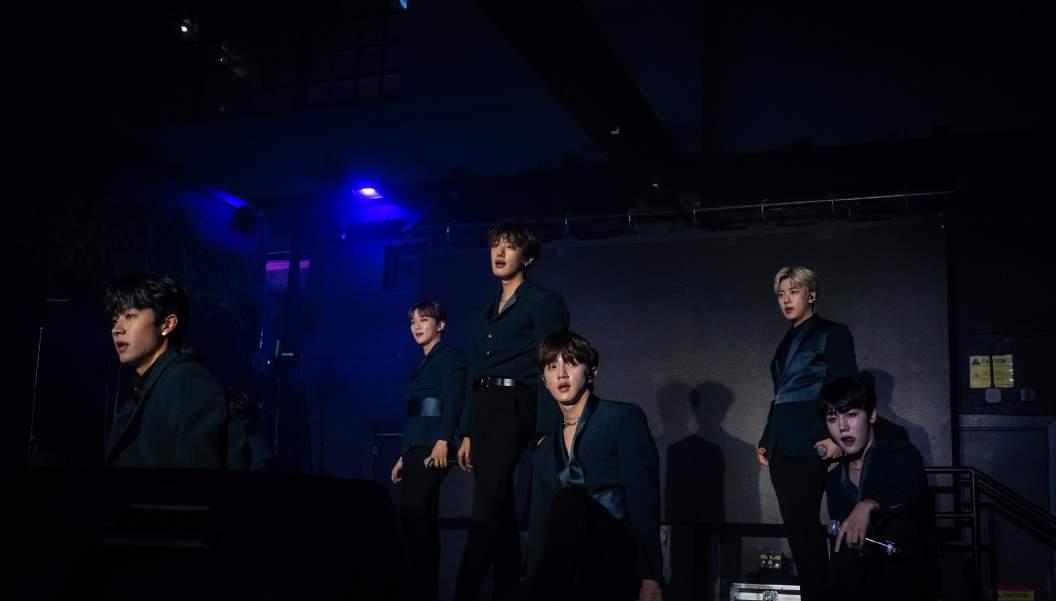
AND THE CROWD GOES WILD: LIANA
Having a best friend whose favorite group is Golden Child, I’ve had the honor of seeing them live twice before, with the Orlando stop being my third time. Going into the concert, I was not quite sure what to expect. I wondered if they would just stick to the same concert they did on their Meet & Live in USA Tour or if they’d find a way to change it up despite being on tour only a few months prior.
One thing I knew before the Grand America tour started was that main rapper and vocalist Tag would be a part of this tour and lead dancer and vocalist Bomin would not be due to a facial fracture (Woollim). During the USA tour, Tag was recovering from liver

issues and was on hiatus (Woollim). Additionally, on the USA tour, main dancer and vocalist Donghyun tested positive for COVID-19, and was unable to perform in Nashville and Atlanta, the two shows I saw. Automatically having different members performing would make the show different with different line distributions and dance formations.
The USA tour was great in itself since it was my first time seeing them live. The difference between the Nashville and Atlanta stops were how much energy the crowds brought. Nashville was lower energy and so the artists had to work harder to bring up the atmosphere whereas Atlanta was more lively allowing the artists to relax and become a little sillier. While the USA tour shows were great, the Grand America tour was far better.
Compared to the previous shows I saw, fans were more outgoing and Golden Child fed off that by becoming more alive and charismatic. Even before the show, I think they felt the different vibe of the audience prompting main vocalist Joochan, to come out of their waiting room and take selfies with the crowd below him causing quite the ruckus in the pit below.
Similar to the USA tour, once they started the show, they plowed through the first three songs like it was nothing and immediately vv`wanted to chat with the fans. They clearly doubled their efforts to learn more English since their last tour and used their increased fluency and vocabulary to maximize audience engagement.
graphics/ vecteezy.com, freepik DAEYEOL - Y - JANGJUNT A GS E U N G M I NJ A E H Y U N - MOEBIJ - NUYHGNOD - NAHCOOJB O M I NO R L A N D O , F LU S TOUR -
22 | SPRING 2023
Due to Donghyun testing positive for COVID-19 mid tour, restrictions on how the group could interact with fans was increased. Before it was mandatory that fans wore masks and not touch the artists, but it evolved into Golden Child being unable to take fans’ phones during the peak fan interaction song, “Bottom of the Ocean,” and restricting close interactions generally. However, on the Grand America tour, they sought to find ways to include more fan interactions in the show. Golden Child asked more questions, did raffle giveaways, accepted a few gifts–for example, a really cute bunny hat–and they even took fans’ phones to record videos of themselves during “3! 6! 5!” and “Pump It Up.”
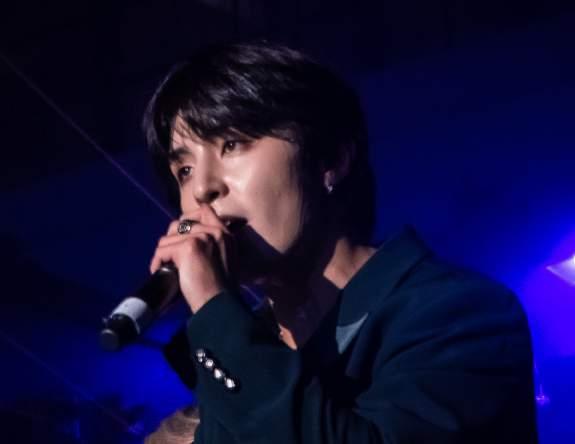
Consistent with the USA tour, they asked fans which songs they’d like to hear a snippet of live and in moments like this I could see how much they cared about fans’ opinions. They didn’t have time to sing bits of their entire discography, but they made an effort to take different suggestions to make each stop its own unique experience for fans.
Besides a few setlist changes, on the Grand America tour it seemed like they were a little more attentive towards fans. They listened and reacted to the audience extremely well. The members threw out hearts galore, read all the banners and posters, and they even started casually bantering with the fans during the giveaway like we were just a group of friends having afternoon tea and gossiping. I enjoyed being able to experience the different touches added throughout the concert to differentiate between the two tours. While the USA tour shows were great, the Grand America Tour
Once inside, media was granted a prime spot just steps away from the edge of the stage. Nathan and I were quickly crowded by fans straining to get as close to the barrier as possible, including one attendee who politely asked me when I would be moving out of the way. She had noticed my camera, badge, and distinct lack of Golden Child-branded merchandise.
Soon, the group filed in from an overpass above the pit of attendees. After their appearance, the energy in the audience swelled. I turned around, squinting to spot the members over a mass of recording phones and waving lightsticks. I found my own excitement being piqued as they engaged the audience with enthusiasm and confidence
felt more exciting and fun making it just a tad more stunning of an experience. It was clear that Golden Child took note of what international fans respond to best and with that information, put on a better, more unique show. Though, one thing that definitely did not change was the quality of their performances. With each step and each note, you could see how passionate they were about music and dance. It truly was a treat to be able to see Golden Child perform live for that alone.
LIGHTS, CAMERA, ACTION: AJ

Nathan and I arrived two hours before the show began, which gave us ample time to lament our shared lack of concert photography experience. Neither of us knew quite what to expect, not to mention we were not even familiar with the performing artists. In fact, this was the very first K-Pop concert either of us had been to.
Regardless, Nathan and I were ecstatic to be there, though, like the fish out of water we were, we had no idea where we were supposed to collect our physical media passes. Confused, we were content to trail behind the line of eager concertgoers as we discussed strategy, compared camera specs and decried the prices of the new lenses we hoped to buy.
Around us, our idle chatter mixed with that of eager fans, their anticipation becoming a thick, palpable buzz as the concert time inched closer. I felt my adrenaline grow, too, but for different reasons. The more I overheard the gushed enthusiasm of strangers bonding over their shared love of Golden Child and their music, the more I felt out of place. The camaraderie of the attendees felt much like a secret world to which I lacked access.
Eventually, an event volunteer steered us to the front of the line, which wrapped around two sides of the building to the venue’s entrance. Here, I felt even more awkward standing adjacent to concertgoers who undoubtedly had been waiting for this moment much longer than Nathan and I.
When the lights adjusted in preparation for the first song, the venue took a collective anticipatory breath before exhaling in a burst of energy when Golden Child began to perform. The liveliness of the crowd did not dwindle for the rest of the song.
As soon as the lights illuminated the members, I found myself on auto-pilot. My index finger pressed the shutter button in frantic intervals between minor setting adjustments. I was unable to pause, lest I lose precious seconds of the song. It was only until after the show when I was reviewing my memory card that I processed what I had actually witnessed. At the concert, my main focus had been capturing as much as I could.
The only coherent thoughts I allowed myself were making sure I was getting a variety of angles and coverage. My zoom lens worked overtime, switching back and forth from group wides to close-ups of particular performers as I strived to get even coverage of everyone. In my periphery, I recognized the patterns occurring in the lighting, working it to my advantage to capture vivid, dynamic moments.
At the conclusion of the song, I felt like I was pulled from a dream, awakened by the audience erupting into cheers. I remember looking over at Nathan, who was just as enchanted as I was. However, there was little time for me to say more than a brief, exhilarated comment before the second song began and the process repeated itself.
As a neutral observer, I could not enjoy the performances in the same way that the rest of the audience did. Their love for Golden Child, however, was palpable in the unwavering energy I felt around me. There was a freneticism in the pit and a sense of being surrounded by devotion at every turn. No matter how alienated I had felt waiting in line, it was impossible not to become one with the crowd as they celebrated the performers.
Photographing the concert was an incredible experience and I would love to shoot another one. It was a delight to capture what was clearly such a source of joy for everyone who attended, myself included.
“Ididn’trealizehowenergeticandexciting photographingaliveperformanceis.Thefans weresopassionateandtheperformerswere
SPRING 2023 | 23
- Nathan Swinburne
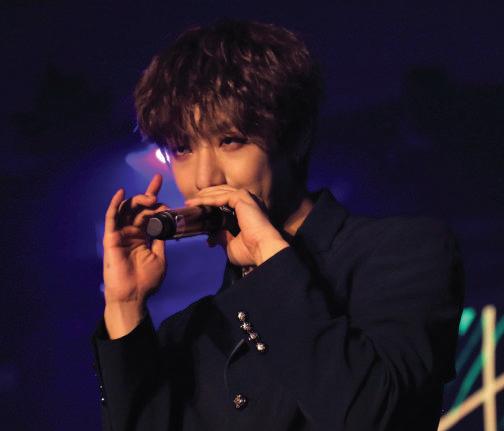
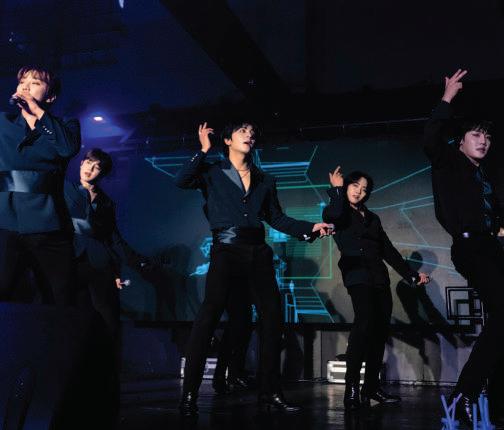








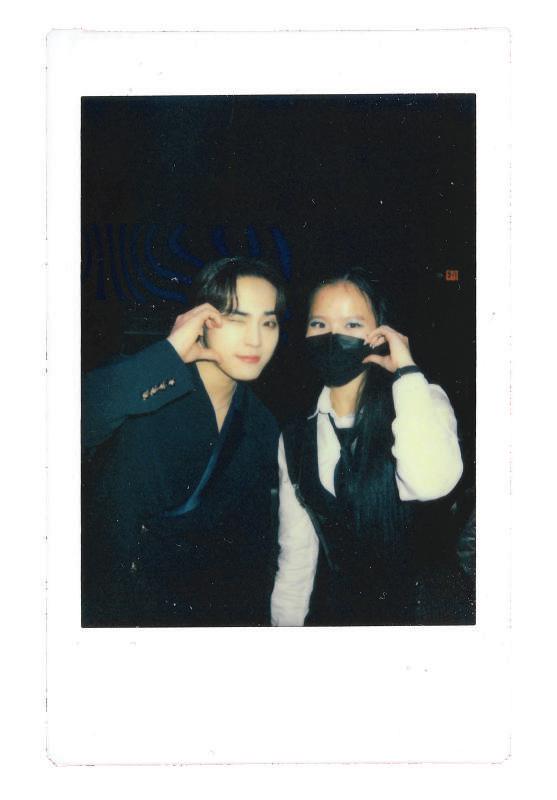

24 | SPRING 2023
Seungmin & Liana
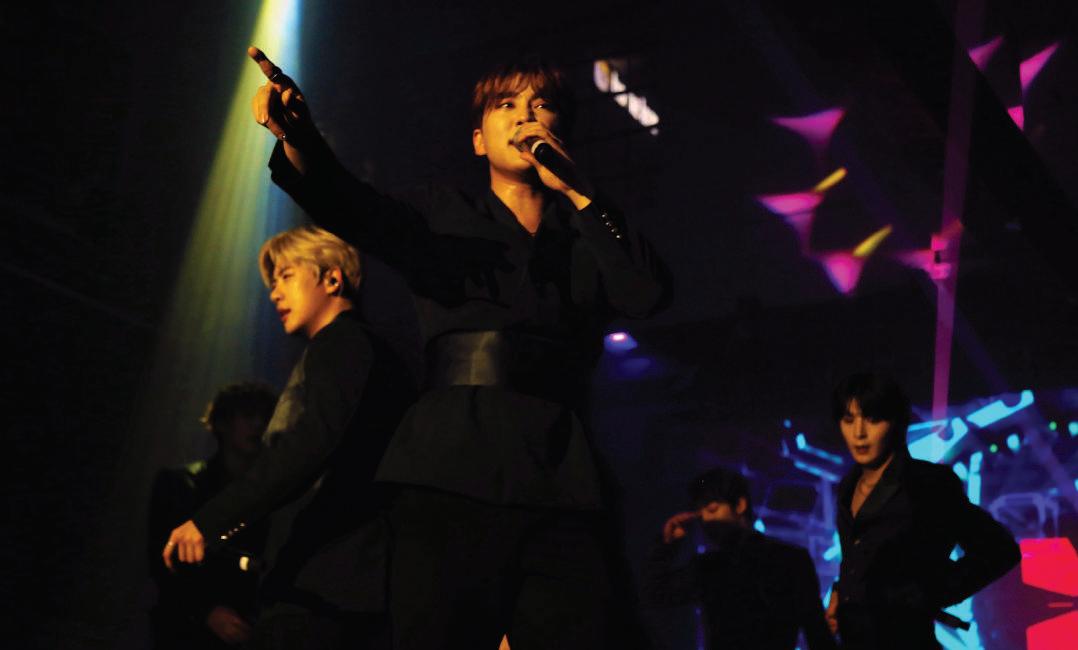


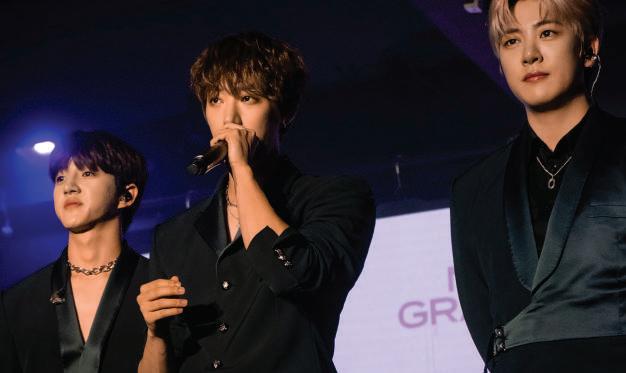





Donghyun! SPRING 2023 | 25
The Lack Of Diversity
(and the Domino Effect of Bad South Asian Representation)
In this coming generation, with numerous milestones in showcasing and representing diversity, shows and movies have been incorporating diverse characters and cultures and many minorities have been able to find characters who they can see themselves in. This is something that videogames have also been keen on venturing in. However, there is seemingly a struggle when it comes to portraying South Asians in media, and more than a few companies and franchises have found themselves in hot water for their specific portrayals of South Asians and their culture. The reasoning behind it is deeply rooted in struggles with poor representation and perception of South Asians, and the importance of these issues translating into reality.
Even in this age of diversity and inclusion, I find it hard to see that many South Asians in media that follow fictional characters in animation and video games. In looking at the few examples, however, there is a pattern to be noticed in the portrayal of South Asians and how misinterpretation and inherent implied colourism can prove to be harmful to the very community such games want to include.

One notable franchise that incorporated South Asian characters into their media would be the “Fate” franchise from TYPE-MOON. With their first visual novel “Fate Stay/ Night” released in 2004, they have expanded into various other media, including anime and manga adaptations, RPG games, and a mobile game that still runs through present. One major trait of the series was that their characters were based off of several different historical and mythical figures of the past, coming from several regions of the world. This, of course, meant that they would eventually reach the South Asian subcontinent.
The first appearance of a South Asian character would be in 2013 in “Fate/Extra CCC”, a sequel to their dungeon crawler predecessor, “Fate/EXTRA’’ released in 2010. The character introduced was Karna, a hero from the Hindu epic, the Mahabharata. This myth is a very well known legend in India and is fairly connected with many stories relating to Hindu mythology. In the Mahabharata, Karna is described as having “physic radiance like bright gold or burning gold. His body reflected the brightness of fire and sun.” In many of the art and pieces made of him, his physical appearance showed one with brown eyes, black hair and dark skin. In contrast, “TYPE-MOON”’s interpretation of the hero was a sheer contradiction to the myth. With skin paler than a sheet of paper, blue eyes and white hair, the “Fate” Karna looked nothing like the legend that Indians were familiar with. The disappointment with “TYPE-MOON”’s portrayal as well as the controversy was present, albeit not as outspoken during its initial release.


“TYPE-MOON” later released a dark skinned Indian character years after. Arjuna, from the same legend as Karna, and his supposed rival, was introduced in the mobile game “Fate/Grand Order” in March of 2018, later a main character in “Fate/EXTELLA LINK”, the sequel to the spin off of “Fate/Extra”, “Fate/Extella”. Arjuna wore clothes that were inspired by Indian garments, and therefore contrasted with Karna (who is clad in an acultural bodysuit and armor) in the way that more represented his culture.
That is not to say there weren’t controversies. Karna was portrayed as a rather generous person, as his conflict in the original Hindu epic was that he was a “flawed good man”. However, Arjuna was, in comparison, made to seem like a resentful person by his side. Arjuna was always seen as bitter and aggressive towards his rival, to which Karna only treats him with niceties, and is shown to harbor multiple instances of envy, jealousy and pent up frustration with himself. The purpose of Karna’s and Arjuna’s characters were to be foils to each other, in which Karna was the one misunderstood to be bad, but he’s actually good, while Arjuna’s perceived to be the hero, while he’s deeply flawed. However, it is seen that “TYPE-MOON” heavily favors Karna and often paints him in a good light and emphasizes his good nature, and this is often at the expense of Arjuna being shown in a negative light. This characterisation is flawed in general, but what’s ultimately detrimental about this is the choice to make Karna the lighter skinned of the two. In addition to this, “Fate/Grand Order” also includes Rama, a major deity in Hinduism, and Ashwatthama, also from the Mahabharata. Rama is pale skinned, inaccurate to his appearance being stated in his epic being blue, as he was an avatar of Vishnu. He is characterized to be calm and heroic. On the other hand, Ashwatthama, like Arjuna, is darker skinned. However, his characterization shows
by Sketch design/ Arianna Flores
26 | SPRING 2023
him being an aggressive person, with eternal pent up rage and frustration.
With this we see that Fate’s two light skinned South Asian characters are considered the morally just ones, while the darker skinned ones are painted to be the aggressive and heavily flawed ones. The harm and detriment with this, unintentional or not, is very severe as this is inherently colorist.
In an article, “The Power of (Mis) Representation: Why Racial and Ethnic Stereotypes in Media Matter”, by Mari Castañeda, she says that “stereotypical media depictions are received as the truth, rendering impressions that people of color are economically challenged and criminalized” and this verbalizes the amount of hurt that such portrayals can cause, albeit the intention or lack of. The stereotyping of South Asians within the media is huge, because of the small band of which there are South Asian cultures represented in media to be analyzed. However, the misinterpretation and stereotypical depictions have a harsher effect than the simple lack of them at all.

To many, 2013 was ages ago. And 2018 was hardly a time for social media “wokeness”. And in that time, many people seem to be more aware of how interpretations can be harmful to different cultures, there has been more accountability towards these kinds of things. However, has this portrayal really changed now?
“Genshin Impact” is not a name that has strayed from many ears. The game released by Hoyoverse in 2020 has a playerbase of over 63 million people in present day. The game releases updates periodically, and with that comes new regions and stories for their players to explore. Each region is based on a region in the real world, with areas such as Liyue representing China, and Inazuma representing Japan. Recently, in “Genshin Impact”’s new update, players get to explore the new region Sumeru, which takes inspiration from South Asia. Although the release was originally on August 24th of 2022, many characters were introduced to the fanbase and… heavily scrutinized.
People were not happy with the new characters. Those represented in the keyframe of the soon to be released Sumeru characters were mostly light skinned. The main archon, or representative, being a very small pale skinned girl. In addition to this, many fans pointed out the inaccuracies of clothing and cultural references made by Hoyoverse in trying to incorporate South Asian elements while visually referencing Amazigh, Nubian, and Persian cultures and combining them. In an article, “As It Adds New Regions, Genshin Impact’s Politics Only Get Messier” by Rui Zhong, published by Polygon, it was stated, “ Fans have pointed out that the movements of dancer Nilou were meticulously researched, but that her belly dance costume is a mismatch for her Persian-style performances.” Hoyoverse has shown a lot of inaccuracies, as fans have pointed out, with South Asian culture, as well researched as they claim to be. Many of the outfits, specifically regarding the female ones, which mostly follow inspiration from belly dancing outfits, have an orientalist amalgamation of Middle Eastern themes that are misrepresented or inaccurate. This, along with their lack of diversity within the region, have angered fans, and rightfully so. The lack of representation, especially in an area that was designated for them, makes South Asian fans greatly disappointed and this impact (heh) has created a significant amount of controversy even now. The elements of orientalism displayed in the recent update are extremely detrimental in the way that misrepresentation often does. It creates harmful stereotypes and allows for the profiling of the cultures involved outside of the media we consume as fiction. Thus, it becomes a very real problem.

While some may argue that any representation for marginalized groups is good, that is not the case when it comes to misinterpretations and stereotypical ones portrayed in the media. The dangers that come with such inaccuracies in the depiction of culture is that it permeates a sense of disrespect towards that community and isolates them more often that it includes them, despite whether that was the intention or not. Many minorities often get this sense of excitement of “Oh-! That character is just like me!”, when they see a character that represents their culture. That sense of inclusion is precious to each and every person within a minority who, often, in general feel very left out in a world that is predominantly everything they’re not. To dash that excitement with inaccuracies that do not represent them correctly or failure to even include them in the way that was promised is very detrimental to the very cause that people try to promote when adding such characters to their media. South Asians who are excited to see characters that are supposedly just like them who see that the character is instead pale skinned and does not relate to them at all in ways of culture, are directly harmed with these actions.
The imaginary worlds that we allow ourselves to be emerged in are much different than our reality but we cannot ignore that media does have big effects outside of their fictionality. Colourism displayed in media, while it may not be in the magnitudes of acts of colourism in real life, is still harmful to minorities. However, as we can see from the amount of criticism that major companies receive for such ill taste in their representation, we are in an age where we are holding more people accountable. So hopefully, some day, brown people will see more people just like them in their favorite media.
SPRING 2023 | 27
Its creativity splashed across the pages of Vogue, showcased in exquisite gowns at the Met Gala and displayed on runways for shows in Milan, Paris and New York — this is fashion at its peak, known for exclusivity and opulence, available on loan to celebrities and for sale to private collectors.
Until now.






Fashion and unique clothing can be found anywhere, even on college students, notorious for their cheap ramen meals and accrued debt from tuition and textbook purchases. The popularity of fashion pages and influencers on TikTok push consumerism to new heights, thanks to greater reach of advertisements and easier access to product reviews, according to communications professor Metta Darmatama Rezi Erdiansyah at Tarumanagara University in Jakarta, in 2021.
Brands like Chanel, Dior and Yves St. Laurent have products that run for hundreds of dollars, but can be seen on teenagers all over social media.
How Fashion and Style Evolve in New Ways to Gain Students’ Attention
brand’s site, though his current collection features unisex basics.
High fashion itself is also complex. Some students consider high fashion to be large luxury houses like Chanel. Others deem it as just expensive clothing or limited clothing apparel.
Taiwanese-American sophomore and information technology major Elizabeth Ho said that these definitions of high fashion can change, along with their reputation.
“High fashion is ever changing. One moment, a brand could be high fashion, such as Gucci, and the next, it may be named as “cheap designer,”’ Ho said. “ There is nothing wrong with fluctuation in titles, as nothing stays the same forever But, it is important to keep in mind that high fashion will always subconsciously cater to the public..”
This is a common theme of luxury fashion houses, whether they are large or small. Commercials on primetime television and free streaming of fashion week shows on Youtube are two examples of fashion being marketed as an exclusive hobby, but technically available to the average consumer.
Coming under fire for this “catering” is designer Marc Jacobs, who is being accused of culturally appropriating Japanese harajuku fashion culture, but also of fetishizing the “kawaii” aesthetic; on Tiktok, videos concerning “heaven marc jacobs cultural appropriation” have a combined total of more than one million views.
Big spending on clothing can more than just buying visually pleasing outfits. Filipino-American junior and digital media major Mark Pido still considers high fashion clothing purchases a “splurge” but finds the experience meaningful.
“I think wearing high fashion to me is a way to show appreciation of the craftsmanship of the designer,” Pido said. “I think it’s interesting to see unique pieces that stand out from the rest and it’s something I consider when I think of high fashion.”
Pido’s appreciation for the skill of designers like Peter Do speaks to a greater meaning of fashion. Do, one of his favorite designers, is a Vietnamese immigrant that mainly designs clothing meant to “adapt to the complexities of women’s lives,” according to his
As stand-alone designers, Asia-Americans have become big brand names in the world of fashion, like ChineseAmerican wedding dress designer Vera Wang and Nepalese-American women’s designer Prabal Gurung.
Still, Pido feels like Asian-Americans are still not adequately represented in the fashion space. “I think the new and different perspectives these designers have is something they would like to cater to the American market, but it has been heavily underrepresented or at least has not gained momentum,” Pido.
Ho acknowledges that her perspective on fashion is not the same as someone born in Taiwan, though she still has strong feelings on Asian fashion in the West. She disapproves of the “sexualization” of traditional qipaos, saris and other styles of cultural Asian clothing found on sites like British clothing retailer Asos, though is used to this treatment.

“Cultural dress such as qipaos were not meant to be sexualized, which makes it worse to me that Asian women have been demeaned and sexualized our entire lives,” Ho said. “It is a statement to wear a sexualized cultural dress, as it shows disrespect to all those who grew up wearing it.”

“It may seem like a cop out answer, but I really do just dress to impress myself.”
- Elizabeth Ho
Story and design by Zoey Young Photography by Natalie Nguyenduc
Fashion can be utilized in a cultural setting to express tradition and values, but it can also be a lifestyle. Freshman graphic design major Elizabeth Fernandez, is a fashion and editorial photographer. “I feel that people don’t recognize that clothing has the ability to tell a story,” Fernandez said.
She is hoping for her work to eventually be in Vogue, getting her start from watching Arab-American fashion photographer Jessica Kobeissi on Youtube, who has more than 1 million subscribers.
for both Strike Magazine and Eclecta Magazine, two Central Florida studentrun fashion, art and lifestyle magazines. She started styling after she got her own sewing machine and started altering and making her own clothing. Years of school uniforms had made it difficult for her to find her own style, she said, but after finding that she enjoyed “upcycling” clothes, she wanted to find others who enjoyed the same.
While working for the magazines, issues do arise when multiple staff members have different visions, forcing a compromise of individual opinion and expression.
For now, Fernandez has spent her time shooting at concerts and events around Central Florida, as well as working with local models and fashion organizations, such as the Fashion Society at UCF.
“Just having that space to meet like-minded fashion forward individuals is awesome,” Fernandez said. “Everyone always brings their own unique style and it’s a great way to learn and work off of each other.”
The club’s Instagram describes itself as “UCF’s leading fashion organization focused on making a difference in the industry,” and features photoshoots centered around concepts like “camp,” which is described as glitzy, theatrical, and over-the-top styling according to Vogue in 2019.
Specific clothing aesthetics have gotten a boost on social media, with for-you pages and explore pages dedicated to various “cores” or dedicated styling choices. Camp is one kind of aesthetic, but there are others, such as “cottagecore” or “ balletcore.”

Ho names her current style “elizacore.” She said she goes for a lot of black garments and dress pants, but does not confine herself to a specific genre of dress. “It may seem like a cop out answer, but I really do just dress to impress myself,” Ho said.

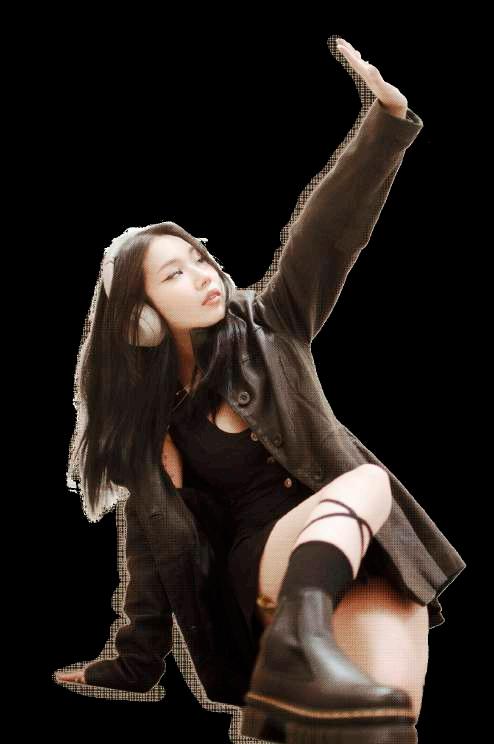

Despite videos that recommend entire accessorized outfits for everyday of the week and for every occasion, individuality is a quality in fashion that many value. However, love for originality can only go so far without causing conflict in the professional fashion world.

Psychology senior Niah Aleger is the styling director
“It can kind of be difficult sometimes. Just like having everyone’s voices heard. Right, especially because I have my own team too,” Aleger said. “It’s not just me styling, I have people on the team and I need their opinion.”
Along with opposing views, Alegar said she tends to be a people-pleaser, making her job much more difficult when she wants the approval of not only her team, but models, directors and her editorsin-chief. When these problems come up, she reminds herself to “put [her] ego aside,” and remember that she can style other pieces outside of these work spaces.
In recent years, she has mainly looked for fabric and clothing in thrift shops, estate sales and antique stores. She enjoys thrifting because she takes pride and thrill in the challenge of making “ugly” clothes into something wearable, but also getting to own and wear a garment that has a history.
“It’s had a whole lifetime before me and now it’s mine. And now I can give it another story,” Aleger said.






“I feel that people don’t recognize that clothing has the ability to tell a story.”
SPRING 2023 | 29
- Elizabeth Fernandez
Making of Issue 24
Cover





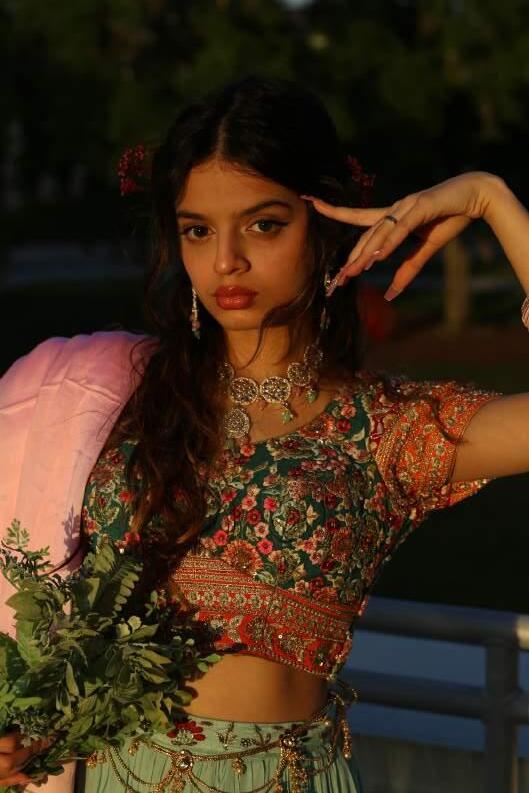
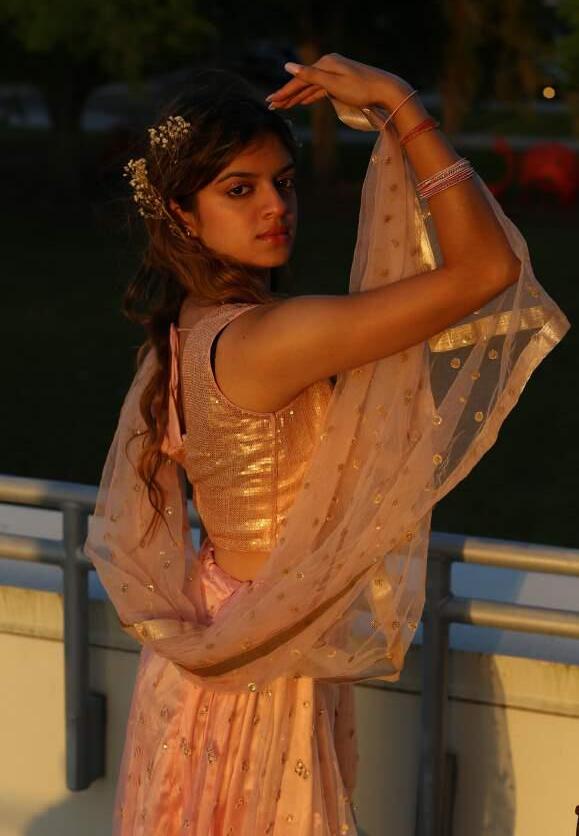



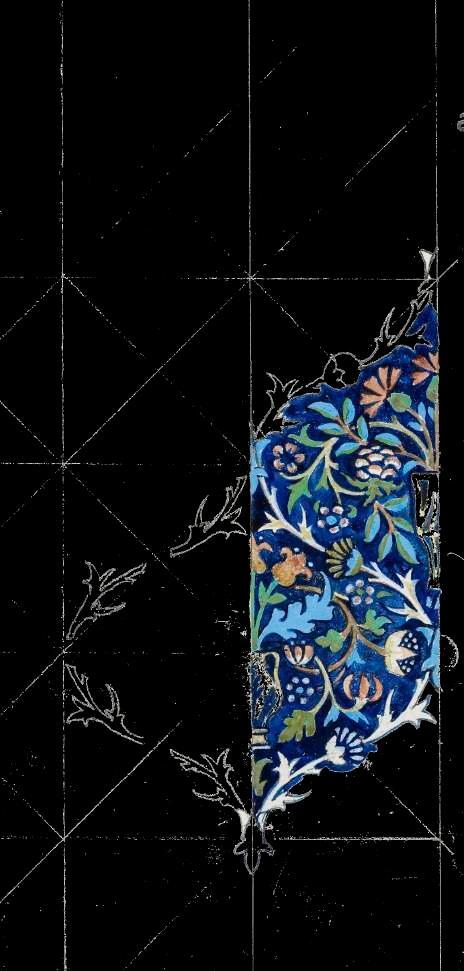

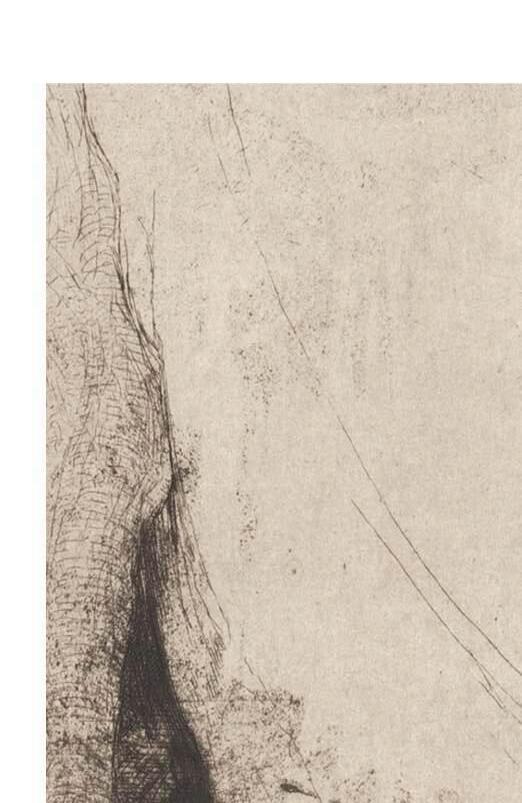

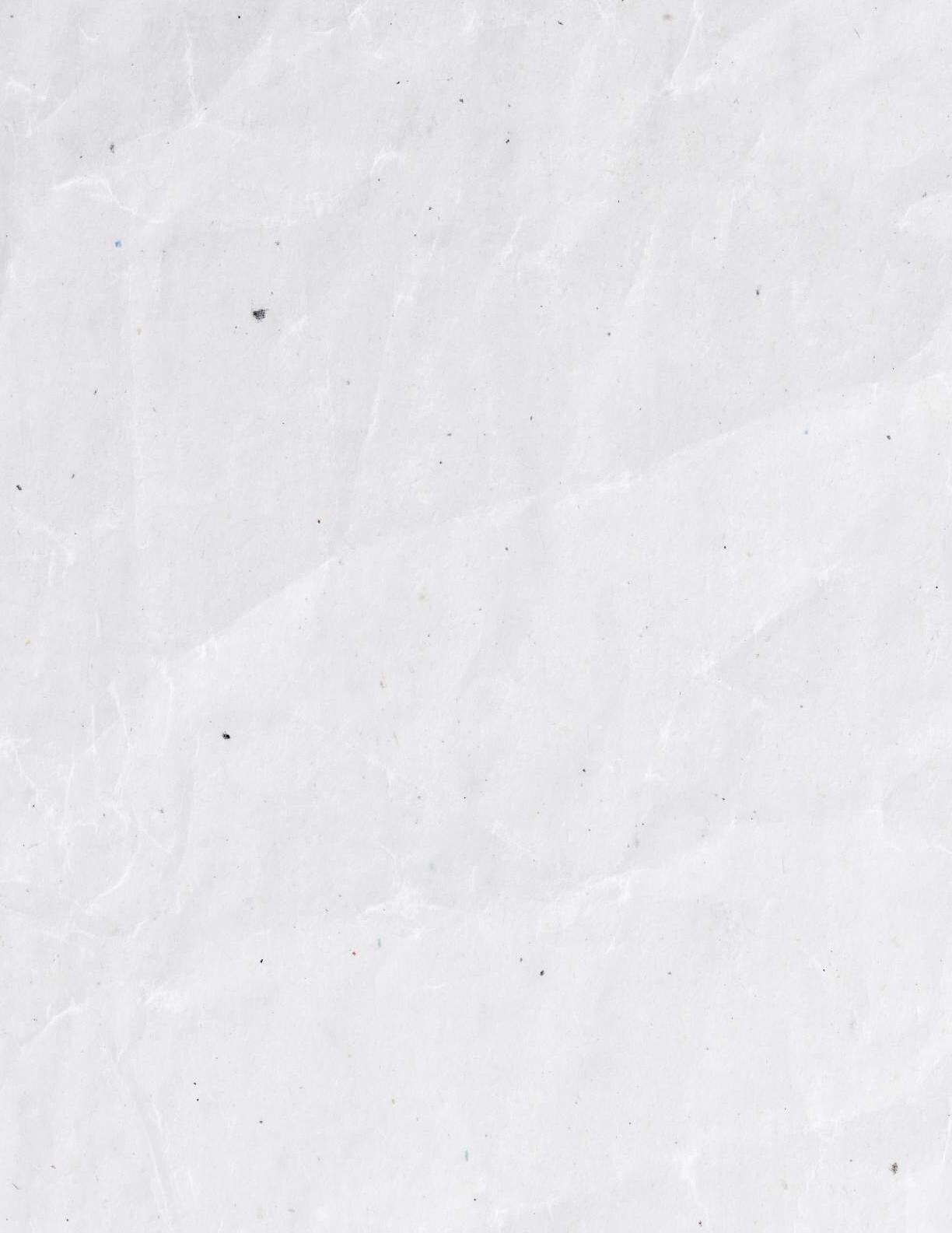 Models/ Jiya Sishodia Khushi Sishodia photography/ Nathan Swinburne
photography/ Natalie Nguyenduc
Models/ Jiya Sishodia Khushi Sishodia photography/ Nathan Swinburne
photography/ Natalie Nguyenduc
New Jeans
Reflections on the
Screen & Stage






How I’ve Grown to Love my Indian
Background
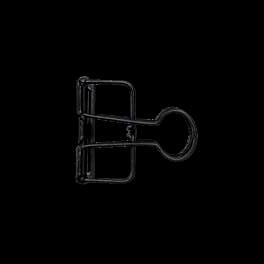



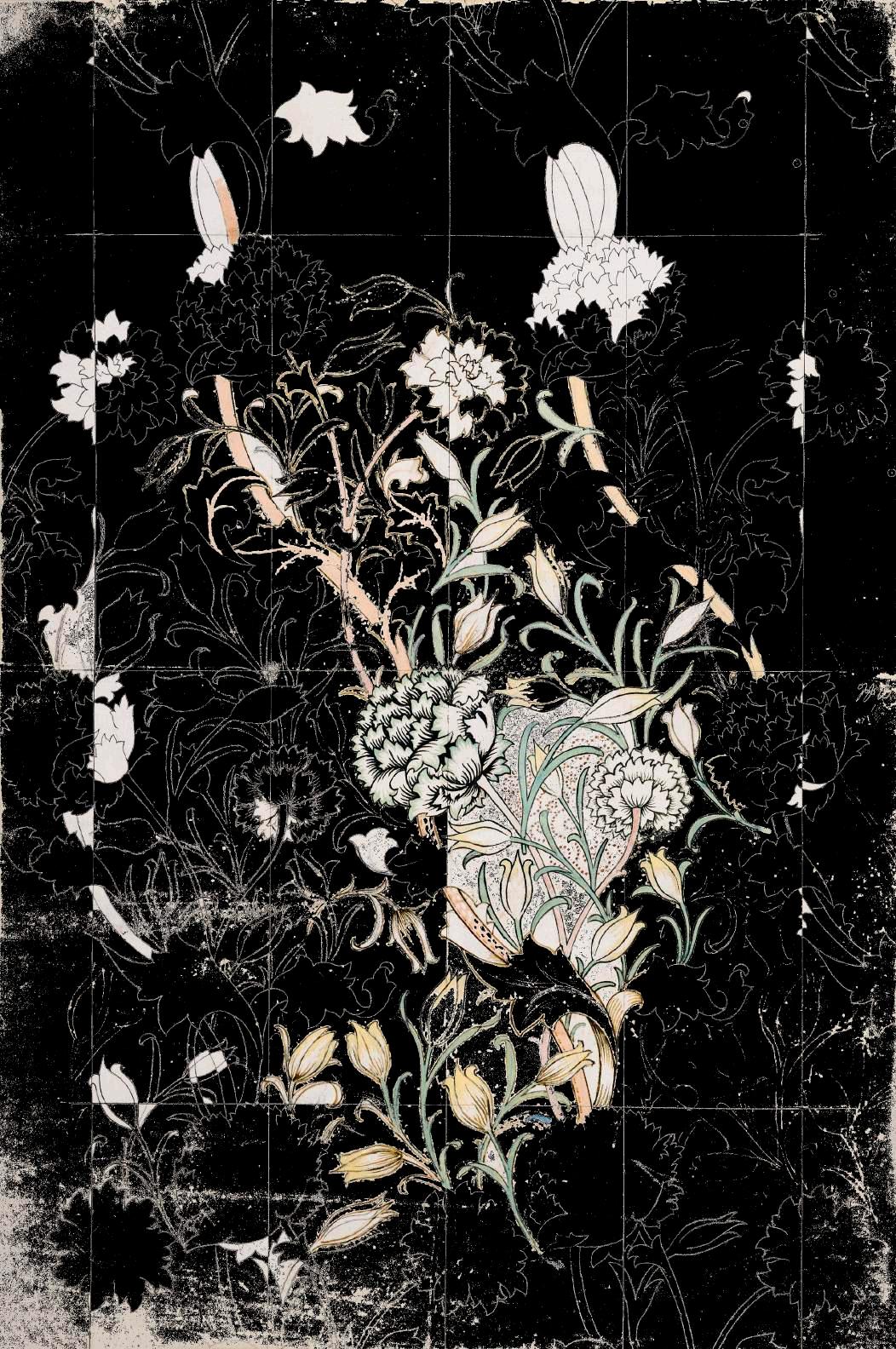
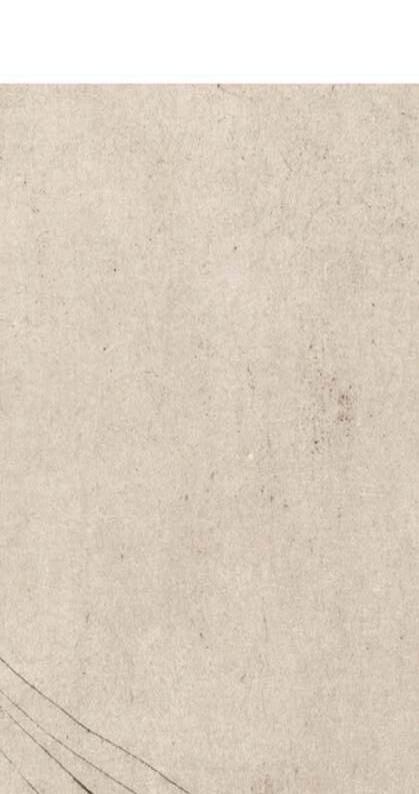


Khadijaphotography/ Nemazie

A Golden Opportunity
photography/ AJ Johnson


2023 | 31
SPRING
Models/ Gregory DeJesus
Alyssa Scripture photography/ Abbie Huynh
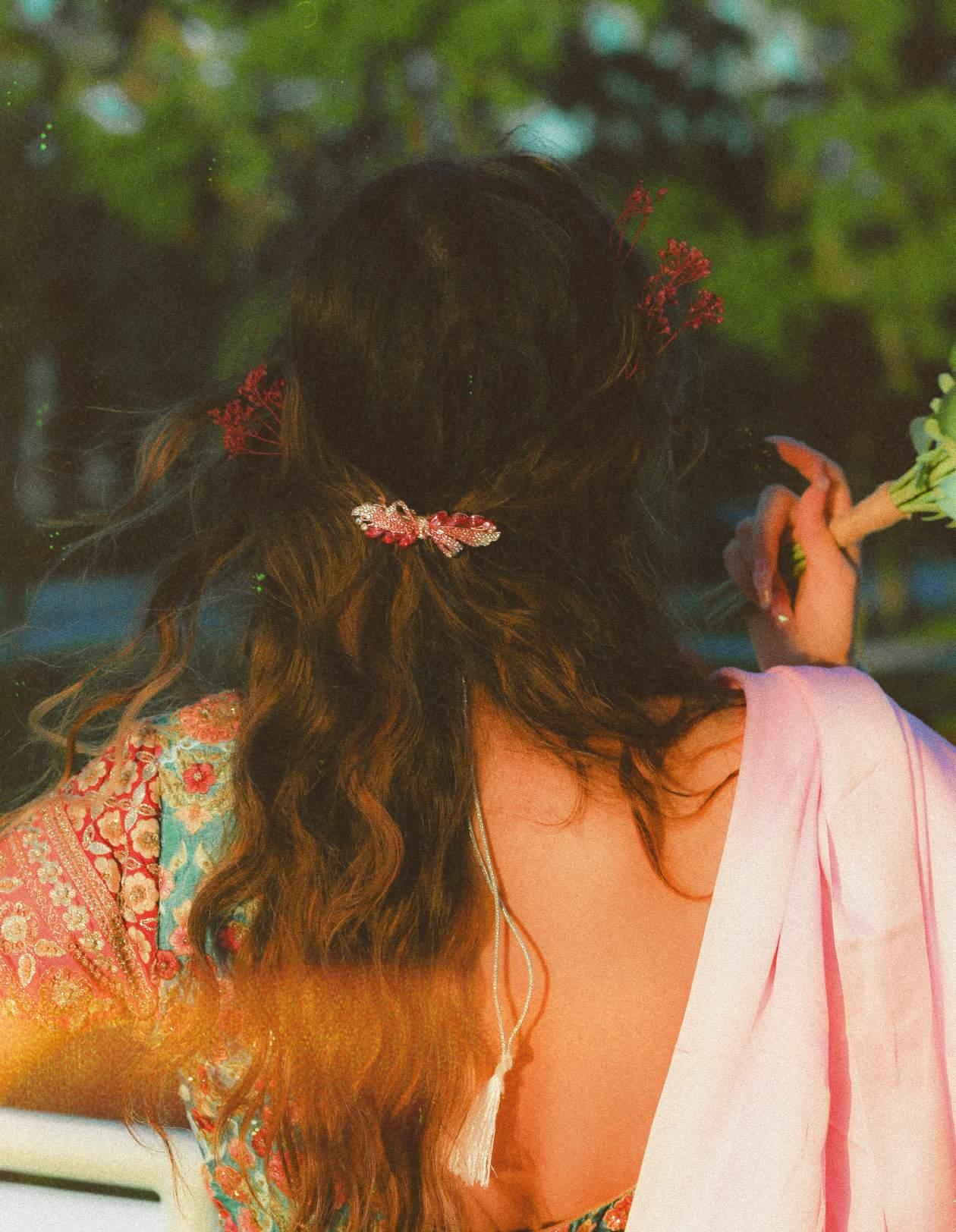

























 Written by Khadija Nemazie
Written by Khadija Nemazie





























































 written by Tarryn Nichols
written by Tarryn Nichols







































































 Models/ Jiya Sishodia Khushi Sishodia photography/ Nathan Swinburne
photography/ Natalie Nguyenduc
Models/ Jiya Sishodia Khushi Sishodia photography/ Nathan Swinburne
photography/ Natalie Nguyenduc

















